Humanitas
Sick planet, sick people
Why nurses must help heal our world Pages 9-13

With Humanity in Mind
An ambitious vision shared Pages 14-27
G.R.I.T.
Building teen resilience after trauma Pages 28-31
Summer / Fall 2023
THE SUE & BILL GROSS SCHOOL OF NURSING MAGAZINE, UNIVERSITY OF CALIFORNIA, IRVINE

Patient Earth
Nursing wakes up to its role in reversing environmental decline
With Humanity in Mind
Past, present, and future, our vision for the UCI Sue & Bill Gross School of Nursing springs from the shared principles of our profession plus we ask – and answer – the question
“Why Nursing?” with help from members of the school’s dean’s cabinet
Hope grows in GRIT
Can helping traumatized teens reduce the effects of trauma on those around them, too?
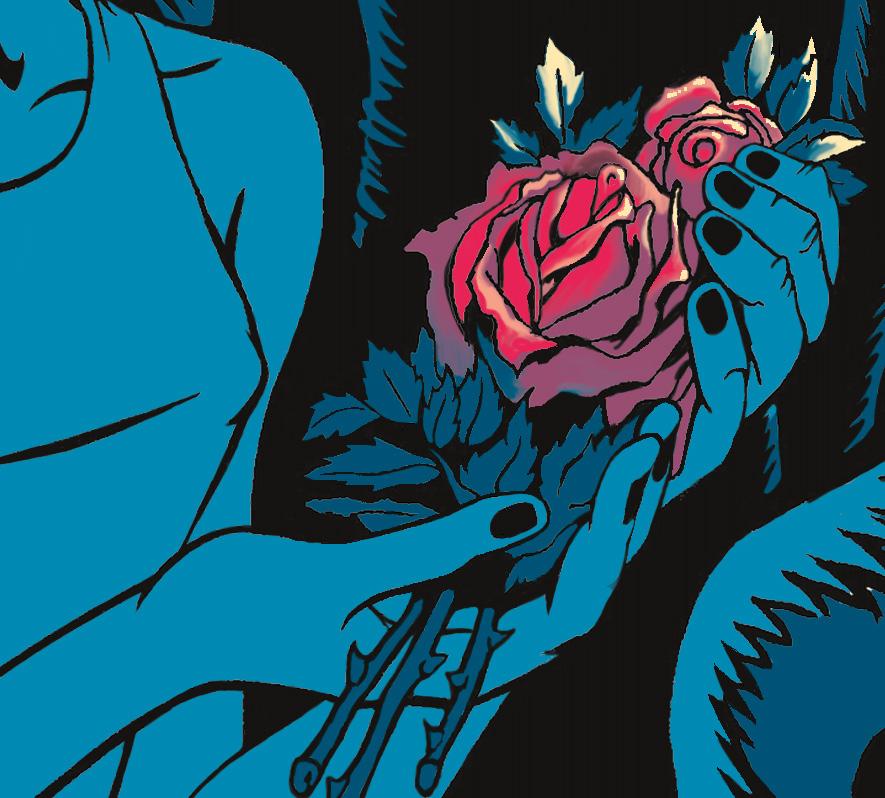

DEPARTMENTS
What’s in a Day?
An appointment with Nisa Patel and Vanessa Rodriguez, family nurse practitioners at UCI Health Family Health Center
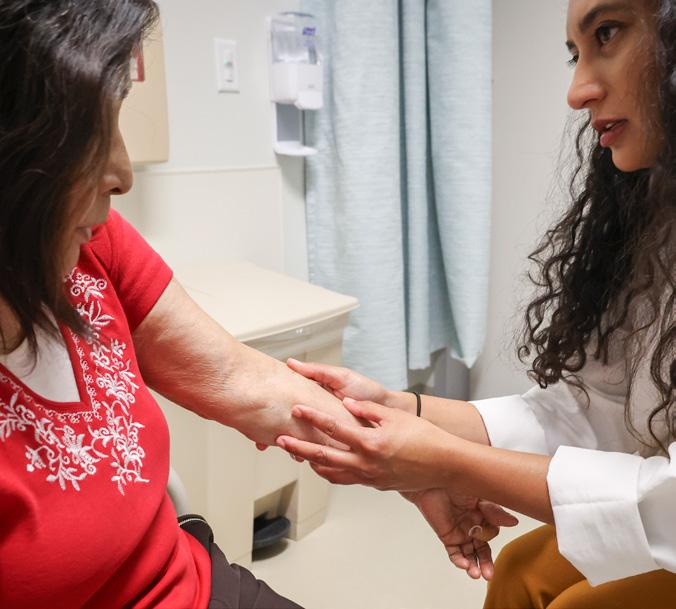
Focus on Faculty
Professor E. Alison Holman’s work on collective trauma grows urgent as the impact of climate change increases
Happenings
Founding Dean Adey Nyamathi has been honored with a Living Legend Award by the American Academy of Nursing in its 50th year
Alumni Impact
Meet two of our alumni working with people at their most vulnerable plus alumni reunion at our new school building
Editor
Gombrich Writers Nicholas
Designer
Illustrators Max-o-matic
Manager Kathryn
Chuck
Printing Lithographix Dean Mark
Humanitas Magazine University
Sue
and
Hall 854 Health
Road Irvine,
nursing.uci.edu Issue no. 2, Summer/Fall 2023
Leonie
Schou Laura Perry Leonie Gombrich
Pete Friedrich
Pat Scanlon Photographers Carlos Puma Elin Slavick Steve Zylius Operations
Hoffman Finance Director
Villanueva
Lazenby
of California, Irvine
& Bill Gross Nursing
Health Sciences
Sciences
CA 92697-3959
9
14
28
On the cover: Max-o-matic’s dramatic collage brings to life aspects of human vulnerability covered in this issue, and how nursing –particularly as envisioned by our school – tackles such challenges every day. Thanks to Lesang Molapisi for the photograph of the field research team from the Victus Global Botswana Organization; photos of UCI Sue & Bill Gross nursing students are
Carlos Puma.
Features
by
32 34 4 6 1
W
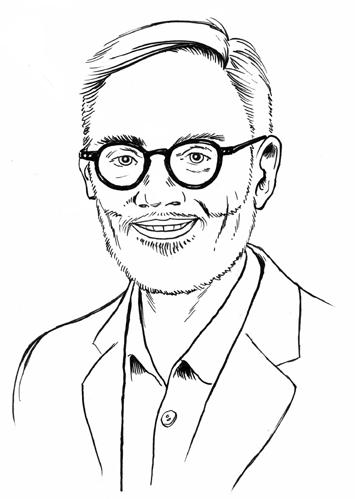
We humans are amazing and ingenious. We innovate, collaborate, and communicate together to improve the lives of others. Humans advancing other humans has been our story for hundreds of thousands of years. However, vulnerability is also part of that story. To be alive, after all, is to be vulnerable to harm and, ultimately, to death. Since we are human, nursing’s province covers every one of us – including nurses themselves. In our moment of vulnerability, we are in greatest need of a compassionate, knowledgeable, and skillful professional caregiver and dedicated advocate. Probably before we can remember, and certainly before we die, all of us will have had reason to be grateful for the care of a good nurse. Because humans always have – and will – need nurses, nurses have always been part of the human story. As our readers will already have spotted, this integral relationship of nurses to humanity, and humanity to nurses, is expressed in the name of this magazine: Humanitas.
It must be acknowledged, nonetheless, that some people are more vulnerable than others. Vulnerability increases not only through disease, accident, or age, as any one of us may experience, but because the societal wrongs that amplify vulnerability do not fall equally on all people. Structural inequities relating to race, economic status, and other categories of social marginalization reduce both access to healthcare and the foundational ability to sustain a healthy life. Daily, nurses witness the sorrows and frustrations of people who struggle against the odds of social and racial injustice to achieve even basic health.
Our belief in the need to tackle these injustices, and how we mean to go about it, is the subject of the UCI Sue & Bill Gross School of Nursing’s five-year strategy (featured on pages 14-22). Rather than a standard strategic plan, ours is a manifesto: a public declaration of our intentions –our beliefs and our motives for acting – as a nursing community. Our manifesto’s scope includes the global issues of climate change and collective trauma, and the profession’s role in addressing these is explored on pages 9-13. This issue also spotlights the efforts of our faculty (pages 6-8 and 28-31), and alumni (pages 34-35), in serving the most vulnerable in our society – stories I’m sure will resonate with you.
These stories will resonate for one simple reason: whether you are a nurse or not, you know that nurses care for humanity.
Welcome
2 : Humanitas
Mark Lazenby, PhD, RN, FAAN Dean and Professor
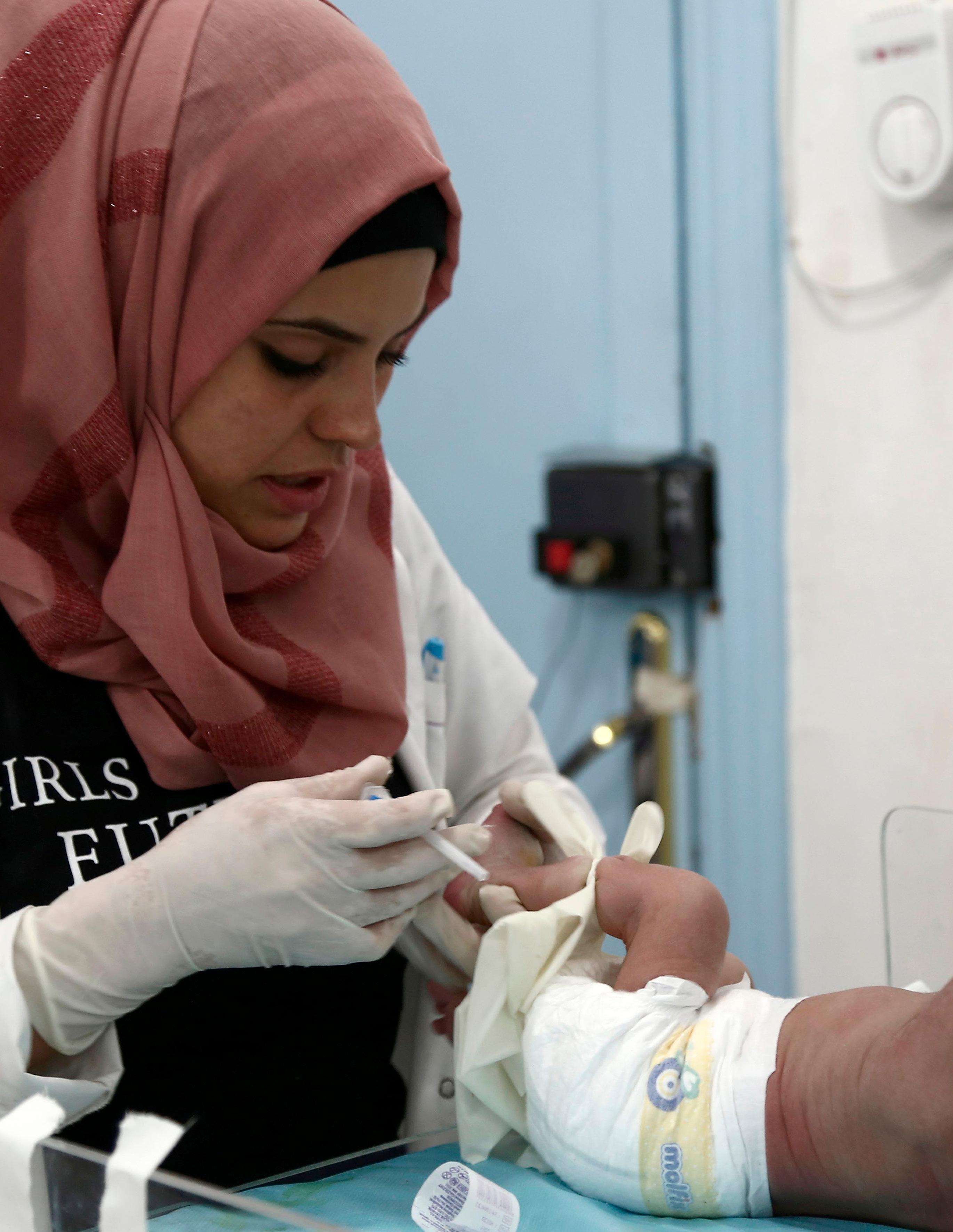
Summer / Fall 2023 : 3
Photo by Nazeer Al-Khatib / Getty Images
What’s in a Day?… Nisa Patel and Vanessa Rodriguez
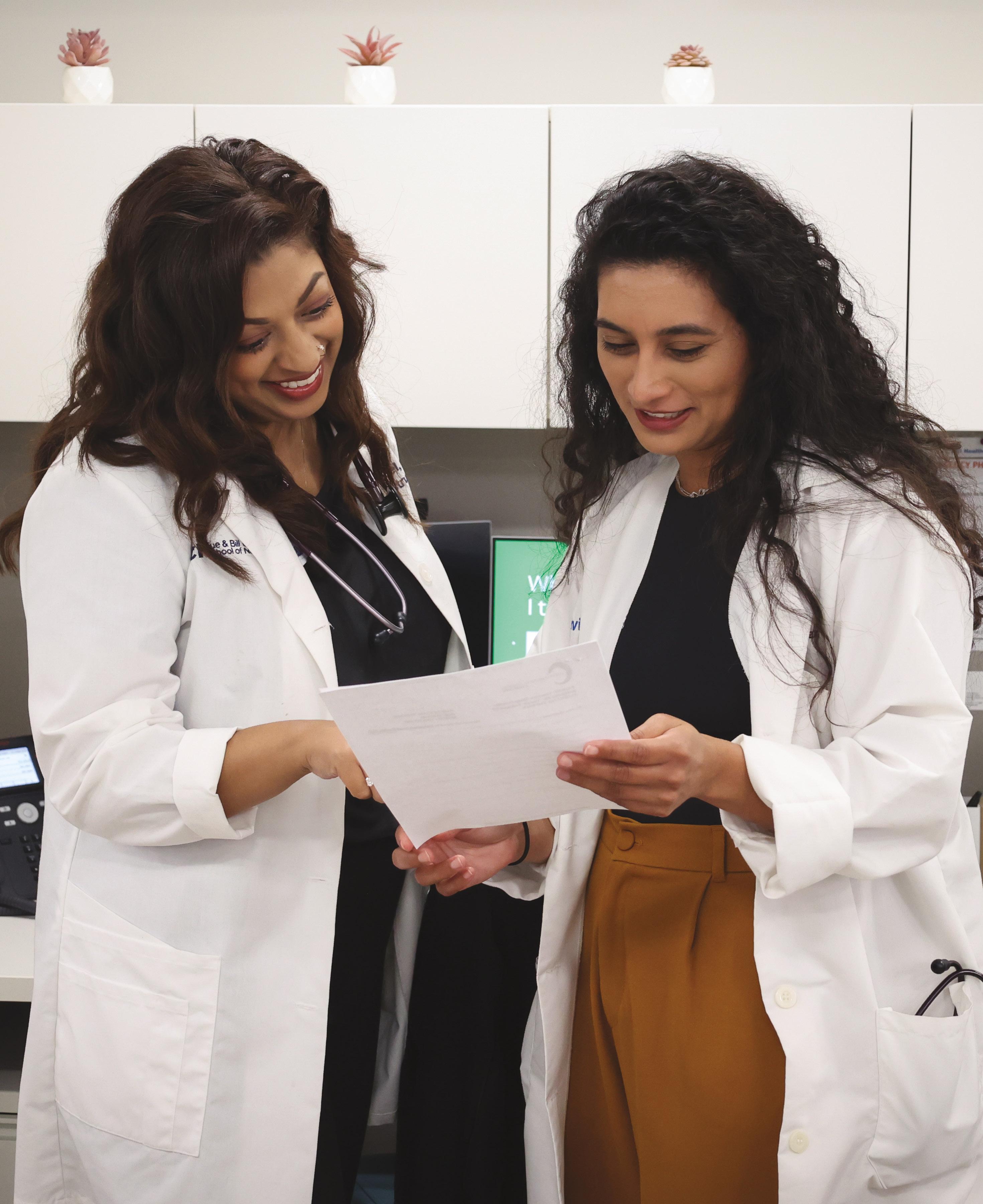
4 : Humanitas
Photo by Carlos Puma
Nisa Patel and Vanessa Rodriguez are family nurse practitioners at UCI Health Family Health Center in Anaheim – one of two UCI Federally Qualified Health Centers in Orange County, California. The center provides family healthcare, pediatrics, and obstetrics & gynecology to some of the poorest communities in the county. In addition to running a fulltime clinic, Nisa and Vanessa are faculty of the UCI Sue & Bill Gross School of Nursing. Their responsibilities for the school include providing nursing education, serving committees, supporting admissions, and participating in several research projects at any given time.
Nisa: Vanessa guided me around when I started at the Anaheim clinic in 2019. She showed me the ropes.
Vanessa: It was really nice to have a fellow nurse practitioner in family medicine. I was the only one when I joined, and the only fulltime NP working alongside the physicians. We got a few more NPs since.
Nisa: I’m from a small town in California. When I first moved to OC, it was a lot of hustle and bustle for me so my husband and I moved a bit outside the county. I have about a one-hour commute. I’ll get up at about 5:30 a.m., walk the dog, have a morning smoothie and off to work.
Vanessa: I get up around 6 a.m., feed my dogs, pack my lunch and get organized. I was born and raised in this area and I live very close. I used to have three dogs but one recently passed away.
Nisa: Once we arrive, we start the craziness! Clinic hours are Monday to Friday, 7:40 a.m. to 4:40 p.m., and we’re always there before and/or after. There’s lots of things coming through all the time: labs coming in, things we need to respond to, phone calls to patients. We’ll have students with us and we work collaboratively with physicians, pharmacists, counselors, a social worker, a nutritionist …trying to make sure that every aspect of our patients’ health that can be taken care of, gets taken care of.
Vanessa: If our patients show up on time we can generally run on time. Not having money for the bus, or gas, or a babysitter – that makes getting to appointments on time difficult for our patients.
Nisa: We’re a well-oiled machine. We’ve worked out how to make our working day a little more efficient.
Vanessa: An appointment is 20 minutes and that’s to address one complaint; in reality, we end up addressing a lot more. You can’t just leave a patient who’s feeling suicidal after a 20-minute slot. In a case like that, luckily we do have our social worker, who’s amazing, but the reality is that 20 minutes often isn’t enough. Our patients are very complex; some people have multiple diagnoses and 5 or 10 or fifteen medications. They don’t always understand their medications or why they’re taking them. On site we can’t do X-rays or scans or every test we need so there may be four or five places a patient has to go to get those things done. If that doesn’t work out in time for their appointment, it’s frustrating, because it affects patient care. But our staff do the best they can do get all we need for the visits. Our staff is wonderful: we’re a family, and there’s always someone to talk to.
Nisa: Vanessa and I have made it a ritual to get lunch together every day. Although a lot of times we do have meetings during our lunch hour.
Vanessa: I tell Nisa: “If I eat a burger and fries, my patients are going to tell me, ‘You told me to eat healthy!’” The population we serve are people I grew up around and they see me all the time. It helps to build more of an intimate relationship with them.
Nisa: We’re headed back to school to get our doctorate – we’re hoping to do DNPs at UCSF with a focus on community health. I think it will allow us to be a little more on the academic side of nursing education. Essentially, the training we do
at the clinic is ensuring our students are capable providers. And we’re involved in several research projects.
Vanessa: We’ve been approached to present a poster at the American Diabetes Association Conference this year about our work on distance glucose monitoring.
Nisa: This is a part of CAREPILLS, an interdisciplinary program where we collaborate with the pharmacist to support patients with chronic diseases to maximize medication management and glucose control. That program is showing real world outcomes: we’ve seen great improvements. We’re meeting quality metrics that mean the government funds us to keep serving these patients. When we get home, our goal is to disconnect. We’re so used to just doing clinic things all the time – like what we call “pajama charting,” getting our charting finished at night with the TV on. We’re trying to do less of that. In the evening, my husband and I try and get a workout or a walk in.
Vanessa: For my sanity, I do aerial silks, hiking, camping, and pole.
Nisa: One of the things Vanessa and I talk about a lot is how it’s important to work on our own mental health.
Vanessa: We both have a really nice home life and a really good support system. As long as I make some kind of change in the world, I’m okay with it. I love my job and I love my patients.
Nisa: I would absolutely agree with everything Vanessa has said. Nursing is about being caring, and I think every family should have a nurse in their household.
Summer / Fall 2023 : 5
Focus on Faculty Finding the Light: Nursing and Collective Trauma
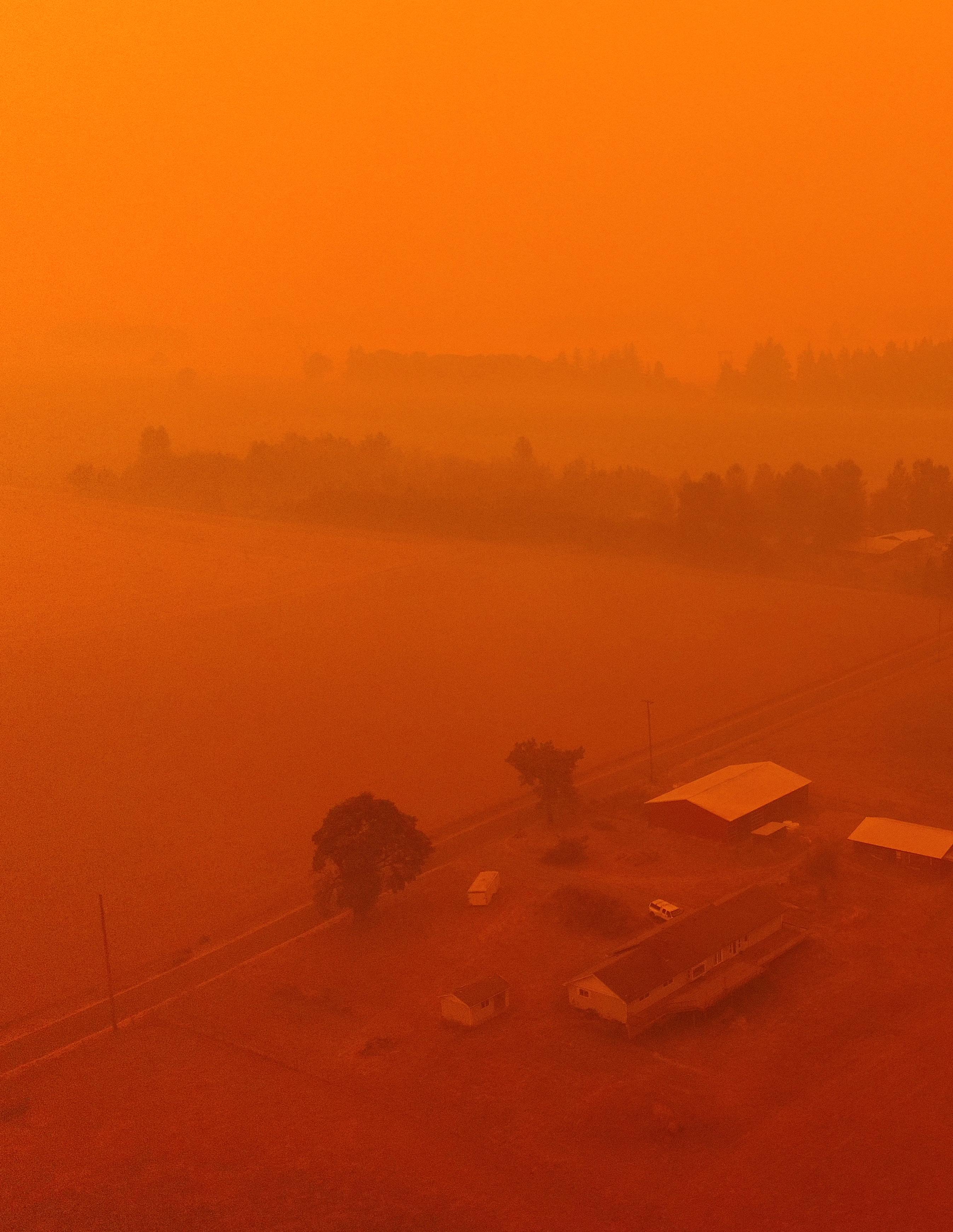
6
Wildfire landscape, Nick Bondarev at Stocksy; Holman portrait by Steve Zylius
: Humanitas
Professor E. Alison Holman is a leader in the field of collective trauma. Her studies of collective trauma following catastrophic events speak directly to policy makers in state and national legislatures. Her current work – a multi-disciplinary study for which she is in the process of seeking funding – focuses on the compound physical and mental effects of climate-induced catastrophe on a vulnerable county in California.
“From my perspective, we had to take care of the family,” she explains. “We had to think about the psychological processes going on in the family’s minds. When her kid’s in the ICU, yes, Mom’s anxious! And we know that anxiety is the most contagious emotion – that’s a wellknown psychological fact. You have a kid with asthma in the ICU who is finally stable, it’s taken several hours to reach this point, then the anxious mom comes in and soon the kid is wheezing again. Bottom line is if you don’t pay attention to the family, you can’t fix the kid. The other nurses called me the psych nurse of the unit – because I always wanted to address the mental health aspect of being in an ICU.”
Frequently, however, it was the source of children’s injuries that made Holman feel frustratingly powerless to provide help that would make a lasting difference. Daily, she encountered families living with complex layers of difficulty and danger, in the middle of which was a child in crisis. These issues were outside the scope of an ICU nurse, and Holman felt that she needed to do more.
quality of the water, soil, and air – so we can look at the combined effects of physical toxicity with the mental health toxicity of being ignored or abandoned for years. I’m interested in understanding how the psychological process impacts the physical health of this community.”
The territory is reminiscent of her very first work as a graduate: on leaving the ICU, she studied two California communities that lost more than 300 homes to wildfires in 1993. “California’s wildfires are increasingly climate related,” she reflects, “although climate was not my reasoning then. I was interested in perceptions of trauma – what we then called ‘community-based trauma.’”
Holman was one of the very first faculty members employed by UCI’s Program in Nursing Science – the degree program from which the UCI Sue & Bill Gross School of Nursing originated. As such, her work has helped shape a curriculum that reflects the school’s deep concern for health equity and community care.

She began teaching her graduate course on Compassionate Care for Underserved Populations more than 10 years ago. In 2017, she incorporated “a section on climate change and its impact and who it affects most,” because “after Hurricane Harvey, it became obvious that the communities hardest hit were the poorest people in Texas.”
This theme is the natural continuation of a body of published work that meticulously builds evidence around Holman’s lifelong question: “How do people cope with all this trauma?”
Her own nursing career began in a pediatric ICU, where she encountered on a daily basis the impact of children’s health emergencies on the wider family unit. It got her thinking about the group implications of traumatic experience –and how to deal with it.
“So many of my colleagues just didn’t address the severity of trauma that families were experiencing,” she says.
She decided to leave ICU nursing to investigate the underlying issues that underserved communities face, what this means for their health, and whether at least some of the traumatic impact on them could be prevented.
“It became my mission,” she recalls, “to understand how people deal with the overwhelming, sometimes cascading traumas in their lives. It remains my passion to this day.”
She is currently part of a multidisciplinary research team seeking to analyze the aftereffects of devastating wildfires on communities in a Californian county that “has an eight-year lower life expectancy than the state of California overall. These communities have a very high rate of mental health problems: suicides, suicide attempts.”
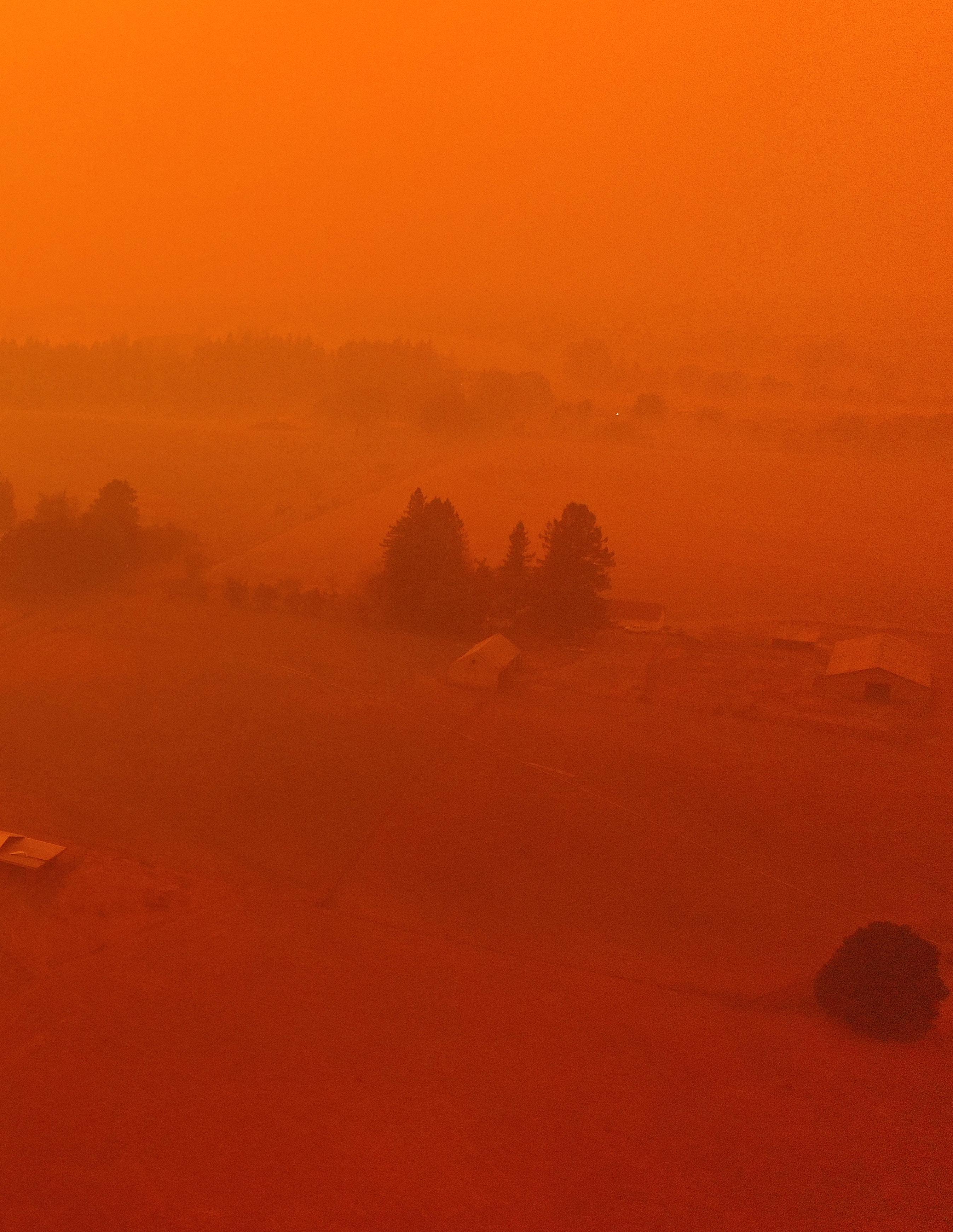
She further explains: “We’re working with engineers who study community infrastructure and its impact on the
In her current study, the impact of climate change on human health is very much a specific focus: “What we’ve seen over the course of the past 20 years is an acceleration in the rate of exposure to major collective events. The curve is going up. After a wildfire the soil’s bad, the lake has been poisoned by toxic run-off – communities depend on that water for various functions – and then you get fire after fire. We’re going to model the accel-
erating pace of exposure. We’re looking to examine predictors of mental and physical health outcomes in this county.”
Holman speaks with the authority of a researcher whose National Science Foundation-funded work with long-term colleague Roxane Cohen Silver is regularly shared with policy makers in Washington, D.C. For three decades, the research duo has ensured that all their studies involve representative samples of the American population, so that their results can be generalized with the necessary degree of confidence to argue for policy and law.
It’s work that is now informed by years of research in the field of collective trauma, beginning in 2001 with a study of the traumatic impact of the terrorist atrocities of 9/11.
Summer / Fall 2023 : 7
“It became my mission to understand how people deal with the overwhelming trauma in their lives.”
Focus on Faculty
Holman was on holiday in Nigeria, “not watching TV for a couple of weeks,” when the September 11 attacks took place. The impact of discovering, via satellite media coverage at a friend’s home, what was going on in her home country that very day, had an enormous effect on her. “First thing, I didn’t believe it. I was massively affected. I couldn’t sleep for several nights. That was the moment I realized that this is a national collective trauma, and I had to do a study on it.”
The studies that she carried out with Silver on 9/11 and, subsequently, the Boston Marathon bombing (2013) and natural disasters such as Hurricanes Irma and Harvey (2017), amassed evidence about the role of media imagery in accentuating and perpetuating collective trauma.
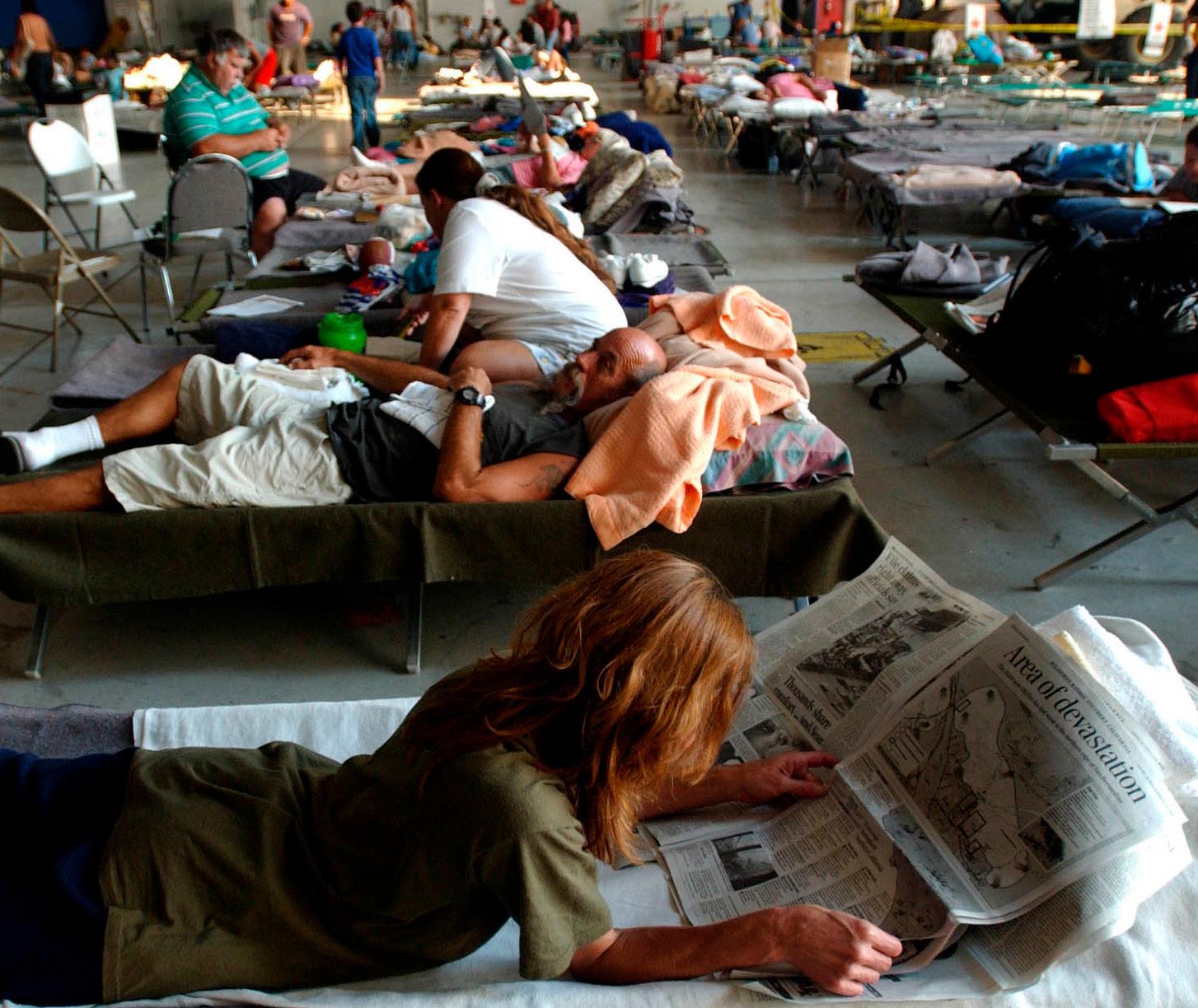
She explains: “Extensive media exposure sensitizes people, not desensitizes them. It’s since 9/11 that social media outlets have blossomed. In the aftermath of the Boston Marathon bombing, exposure to bloody images from the bombing site increased the distress of those who saw them – and the more media people consumed, the more distressed they
As people become more distressed, they become more attached to reporting of the event, and media outlets roll the worst, most eye-crashing pictures as they tell the story. It’s a negative cycle. And when you’re watching it in the media, you’re powerless to stop it…unless you turn it off.”
The distress caused by exposure to adverse circumstances that are out of your control is an enduring theme in Holman’s narrative. This distress is particularly severe when it is categorized as “moral distress”: where a person can see the (morally) right thing to do yet sees that it is not being done, while they themselves lack means to, or are prevented from, doing it.
“They’re not powerless,” she says. “It’s that they can see what’s wrong, and it’s just so hard to believe that no one is doing anything about it.”
Dealing with compound trauma and its aftereffects can still be hard for her, too, she acknowledges. But these days, her own distress is somewhat ameliorated by a sense of having helped.
“Being able to share my findings with policy makers helps. Being able to hopefully have that influence on how people address the problems – that makes a difference to me. And teaching about compassion. That’s my biggest bridge to my students – to help them learn ways to work with people in underserved areas – you have to learn how to talk to people! Show respect and understanding. That takes a true compassionate stance.”
became. Those images can light up the part of the brain associated with PTSD.
Despite this inability to affect events being central to the kind of trauma she studies, Holman is averse to describing those affected as “powerless.” Her line of inquiry has been driven by an archetypal nurse’s mission to follow the imperative to help others and, crucially, to help others help themselves.
Holman is not backing off her mission any time soon. If anyone has the power to reduce trauma by reducing the causes of trauma, she implies, then why would they not use that power? In her new study on the compound results of climate change-related disaster, she knows she is investigating the biggest potential cause of trauma in our times.
“Human-caused harm often leads to a stronger [trauma] response than natural hazards,” she says. “And climate change is creating a much thinner line between the two. The traumatic effects are increased because we see people and government agencies not doing anything about it, and we want them to.”
 Top, Lexia Frank at Stocksy; bottom, Ann Johansson/Corbis via Getty Images
Top, Lexia Frank at Stocksy; bottom, Ann Johansson/Corbis via Getty Images
8 : Humanitas
The entire United States pacific coast is at increased and increasing risk of wildfires, with homes in Lake County, California rated the highest risk in the state. Below: A Red Cross shelter for forest fire refugees in San Bernadino International Airport. Above: Forest fire aftermath in the Pacific Northwest
Patient Earth
How nurses are helping to reimagine healthcare’s role in planetary health
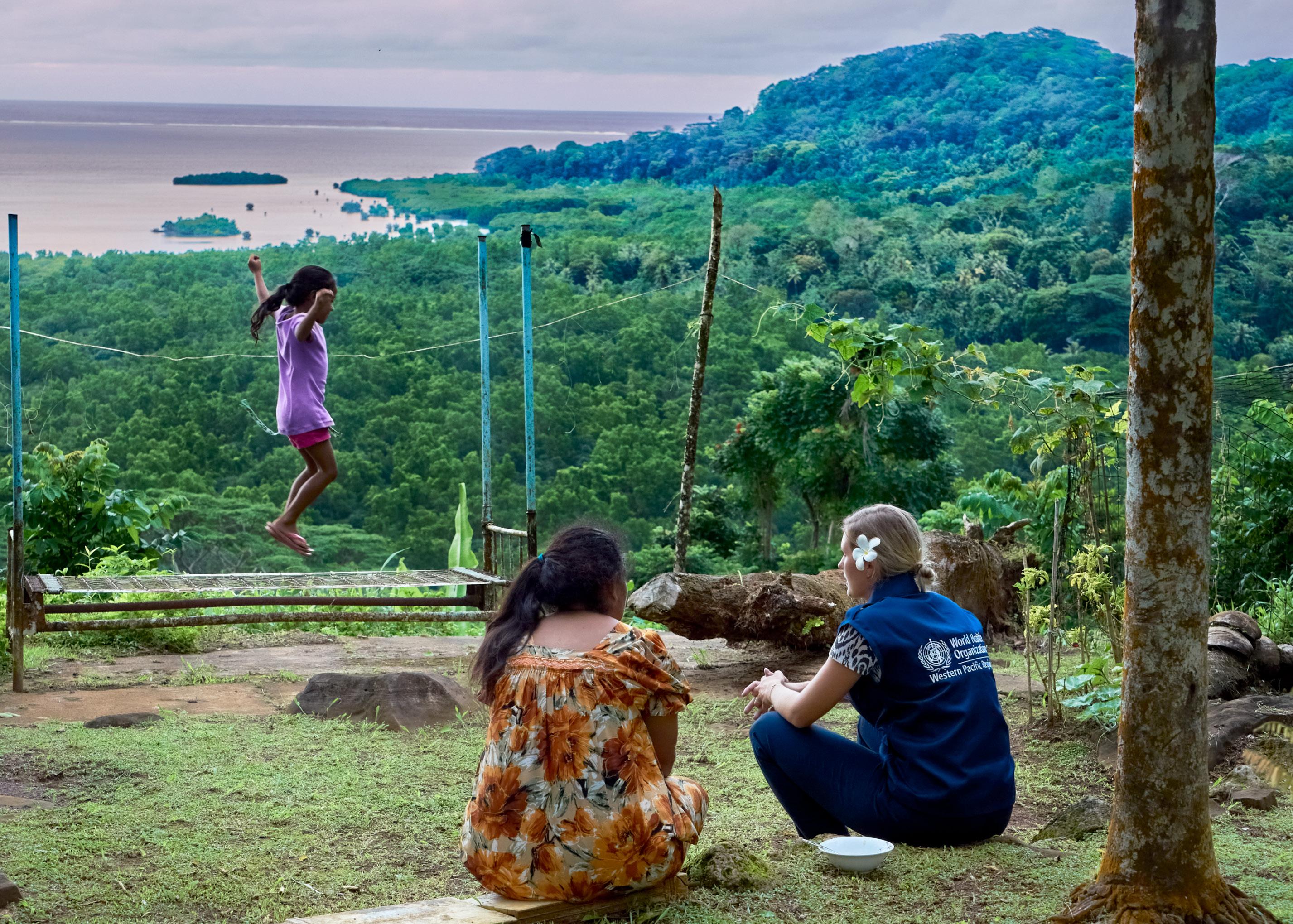 By Nicholas Schou
By Nicholas Schou
If Planet Earth were to be subjected to a diagnosis, it’s fair to say that its current condition would be considered life-threatening. This is bad news for the 7.9 billion people who live here, many of whom are already suffering from the effects of climate change induced illnesses and natural disasters, as well as other human caused environmental health impacts.
It is perhaps no coincidence that within the healthcare professions, a movement is growing to conceptualize this diagnosis while also helping to create a more sustainable future for our planet and its human inhabitants. Helping to lead that effort is the world’s largest qualified profession: nurses, whose cohort of 27 million people means that it will be on the front lines of any successful effort to heal or at least stop degrading the planet’s health.
One of the visionaries in the emerging movement to reimagine
nursing as an environmental healthfocused profession is Beth Schenk, executive director of environmental stewardship for Providence St. Joseph Health, a Catholic non-profit healthcare system based in Renton, WA that operates 51 hospitals on the West Coast. Schenk, who doubles as an assistant research professor at Washington State University, is based in the Pacific Northwest, which has experienced a spate of climate emergencies that helped steer her to action, including a devastating series of regional forest fires and a historic heat dome the likes of which had never been seen before.
Humanity’s increasing vulnerability to the symptoms of planetary malaise could hardly have been clearer to Schenk. “It was 116 degrees in Portland and 108 in Seattle,” she recalls. “Up here, hospitals are not equipped for that, so
wings of buildings had to be shut down. Emergency rooms from Canada to California were overwhelmed.” Seeing how climate change directly impacted nearby hospitals reminded Schenk of how she first became aware of the healthcare industry’s negative contribution to our planet’s health 30 years ago.
“When I was first a nurse, I was horrified about the amount of waste I saw in nursing,” says Schenk, who in 1993, as an ICU nurse at St. Patrick Hospital in Missoula, MT helped launch the hospital’s first successful recycling program.
“We threw so many things away and created so much waste,” she adds.
“When you throw something ‘away’ there is no ‘away.’ It goes someplace
Photo by Yoshi Shimizu © 2023
A public health official from a nongovernmental organization liaising with community members in the Federated States of Micronesia, where extensive coastal flooding and erosion, and changes to sea levels and typhoon frequency, are already affecting human health
Summer / Fall 2023 : 9
“…hospitals are not equipped for 116 degree heat – wings had to be shut down.”
Patient Earth
and getting it to the right place is our responsibility.”
Today, the health sector produces 8.5 percent of U.S. greenhouse gases such as carbon dioxide, methane and ozone – roughly twice the impact compared to the
critical to Lazenby’s vision. To accomplish this, hiring a professor who works in the field of environmental health and informatics is an important strategic priority. “We have a crew here that works in informatics, and I’d like to round that out with informatics and environmental health,” says Lazenby. “That’s my concrete vision here at the school.”
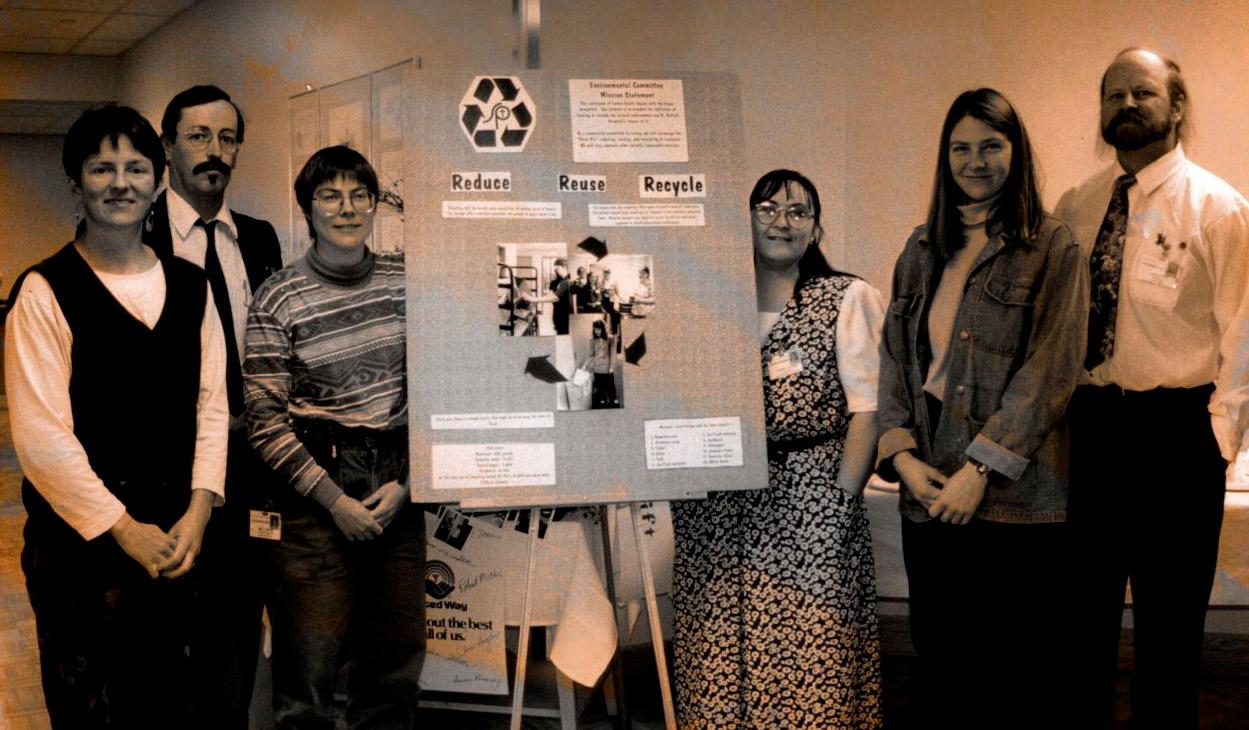
global average of less than 5 percent. Half of those U.S. emissions are estimated to come from hospitals alone.
“U.S. healthcare is very resource-intensive, more so than most countries so we are a big part of that problem,” says Schenk. “People come to us from around the world for health services, and in the process, we create a lot of pollution that causes trauma and disease around the world. The circle is not helpful, and we want to break the circle that causes that unwitting harm.”
Mark Lazenby, dean of UCI Sue & Bill Gross School of Nursing, hopes to break that cycle as part of an ambitious five-year strategic framework for the institution. A goal of the nursing school within that framework is to become not just carbon neutral but also a leader in the critical effort to create a new cadre of nurses who will function as advocates and change agents for Earth’s future health and habitability.
Ensuring that future nurses understand the data on the human-inflicted disease now impacting patient earth is

Diagnosing Earth’s condition as critical thanks to human activity may sound hyperbolic, but the data are clear. Since the industrial revolution of the late 19th century, global temperatures have risen by an average of 0.14° Fahrenheit per decade, or a total of about 2°, according to the National Oceanic and Atmospheric Administration. However, the rate of warming since 1981 is more than twice as rapid: 0.32° F per decade. Heatwaves have become more frequent and intense, posing significant human health risks such as heat exhaustion, heatstroke, and cardiovascular complications to populations that have never experienced such emergencies.
Extreme weather events such as hurricanes, cyclones, floods, and wildfires have also become regular occurrences, along with major droughts in highly populated areas from Africa and Southern Asia to the Southwestern United States. In June 2023, for the first time ever, code “purple” emergencies were declared along the U.S. Eastern seaboard thanks to massive plumes of smoke from late spring wildfires in Canada, with outdoor events cancelled hundreds of miles from the conflagration areas. This impact on humans is nursing’s concern.
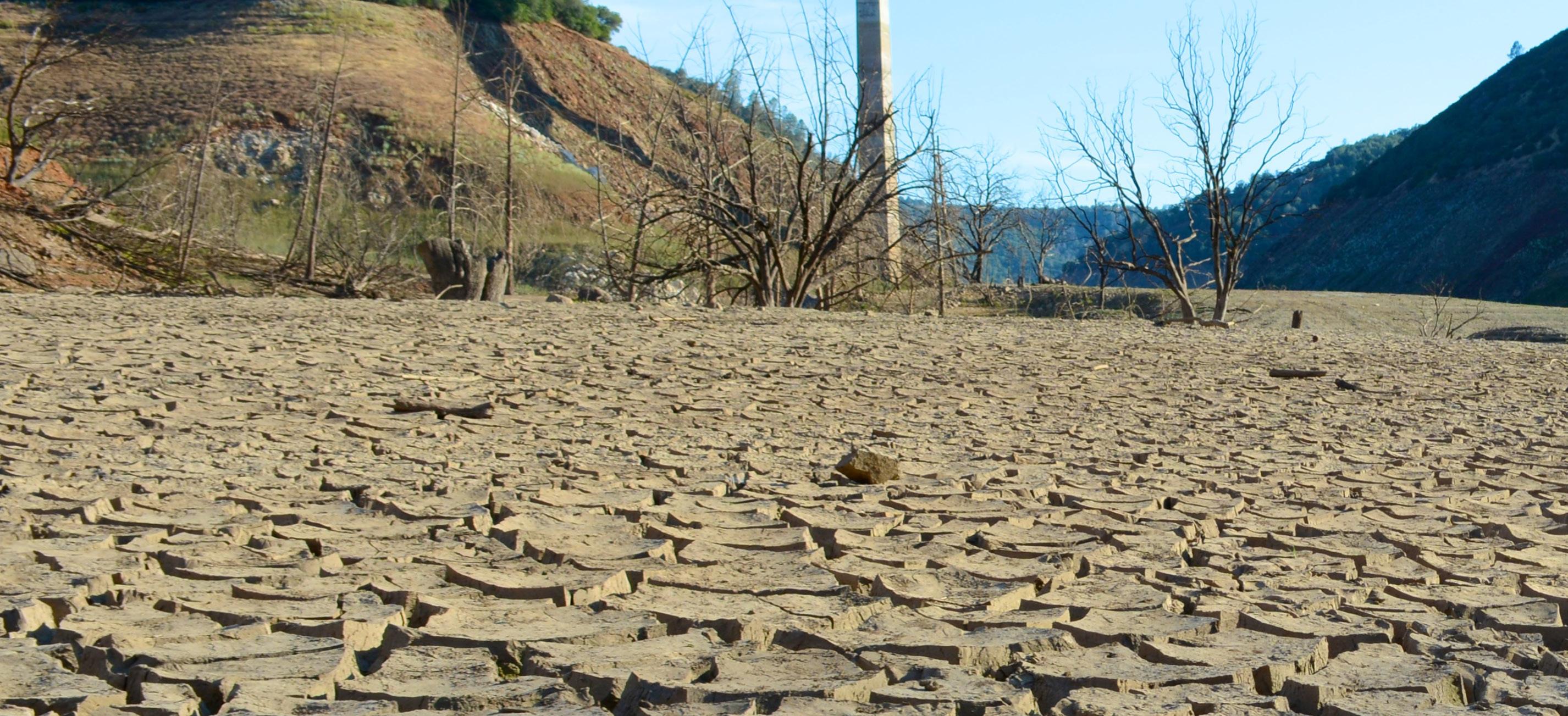 St Patrick Hospital, Missoula, MT circa 1993. Nurses were involved in launching and promoting the hospital’s first successful recycling program
Beth Schenk, executive director of environmental stewardship for Providence St. Joseph Health
St Patrick Hospital, Missoula, MT circa 1993. Nurses were involved in launching and promoting the hospital’s first successful recycling program
Beth Schenk, executive director of environmental stewardship for Providence St. Joseph Health
10 : Humanitas
Photos courtesy of Beth Schenk
Patient Earth
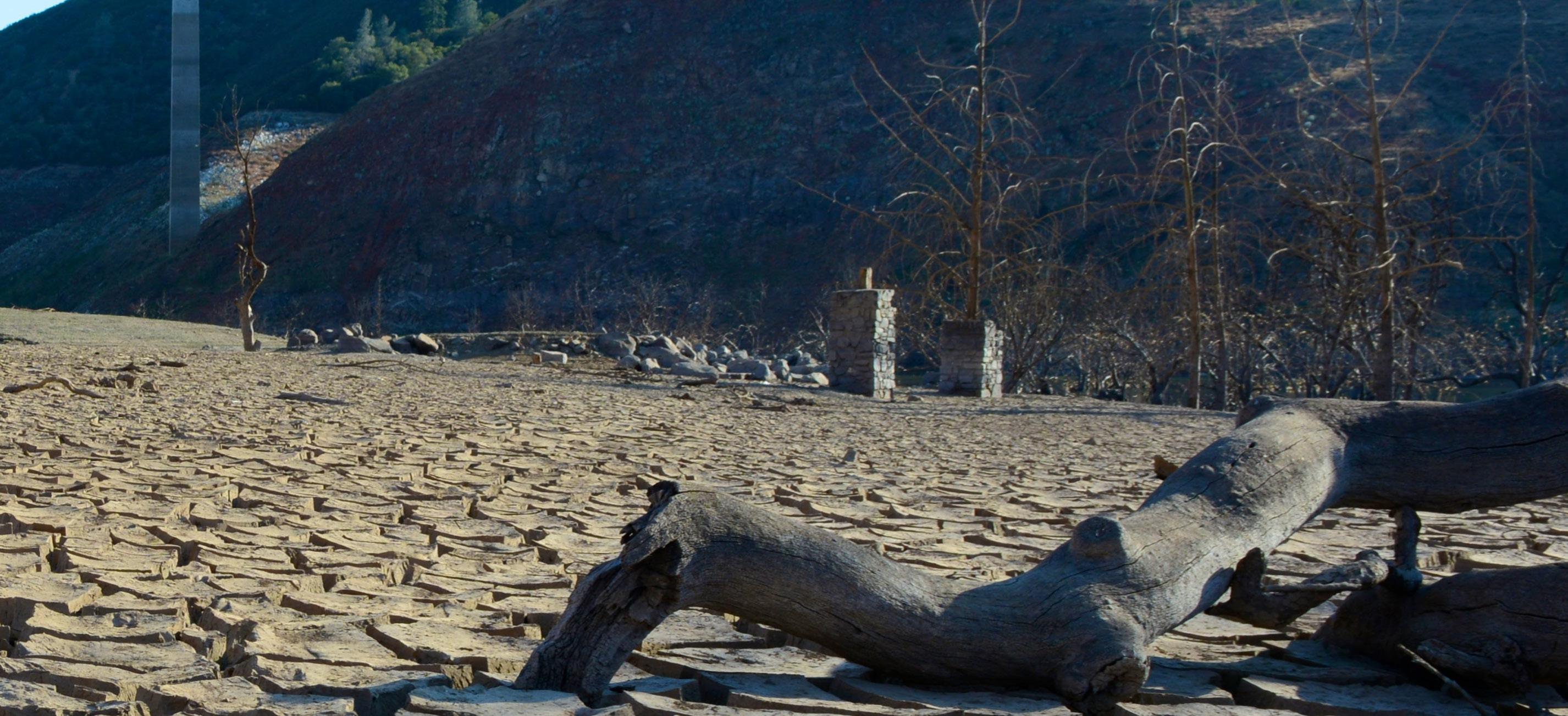
Given the nature of their practice, nurses tend to think in terms of systems-oriented solutions, a process that theoretically can lend itself not just to solving the underlying health issues faced by human individuals, but the planet as a whole. “Systems thinking is a hallmark in nursing; it always has been,” observes Schenk. “It is so natural and is part of our solution: being able to really think about health and wellness and delivery of care differently.”
It’s a notion similar to what the late nursing legend Donna Diers, the former dean of Yale University’s nursing school articulated thusly: “caring for the sick, the potentially sick, and the dying and tending the environment in which that care happens.” In effect, the argument goes, what the world needs now are nurses who also think and act like climate activists. One such person is Teddie Potter, a clinical nursing professor at the University of Minnesota. Potter directs the school’s planetary health division, an initiative to mobilize health care professionals to lead the fight against climate change and environmental destruction. The program brings together various disciplines to promote a holistic approach to the underlying issues affecting global health.
“Climate change is just one of the many crises that are hitting us all at the same time,” Potter, who is also a longtime climate activist, says. “A treatment based approached to the problem isn’t going to happen fast enough: this is a systems issue. It’s not just doing additional research into the nature of the problem; it’s looking at how do we develop solutions that will help improve the health of the planet.”
Potter describes the program’s operating vision as seeking to ensure “optimal health and wellbeing for all people on the planet.” In setting up the curriculum, she and her program colleagues reviewed the teaching essentials required for accreditation by the American Association of Colleges of Nursing. “There was only one competency for climate change and one for planetary health [the term for the health of all earth’s systems that support life, including biodiversity and climate], so we added a concept for planetary health,” she says. “We are using that concept to thread content into a curriculum that we will share that with any school that asks us.”
The University of Minnesota is one of 350 universities, nongovernmental organizations and government agencies that make up the Planetary Health Alliance. On July 1, 2023,
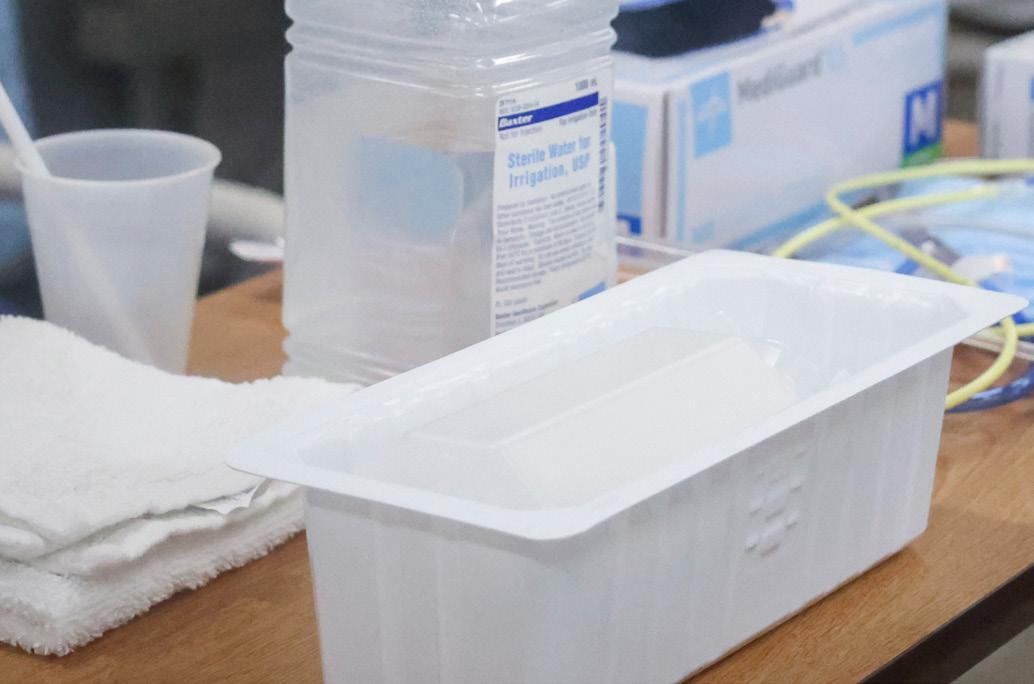
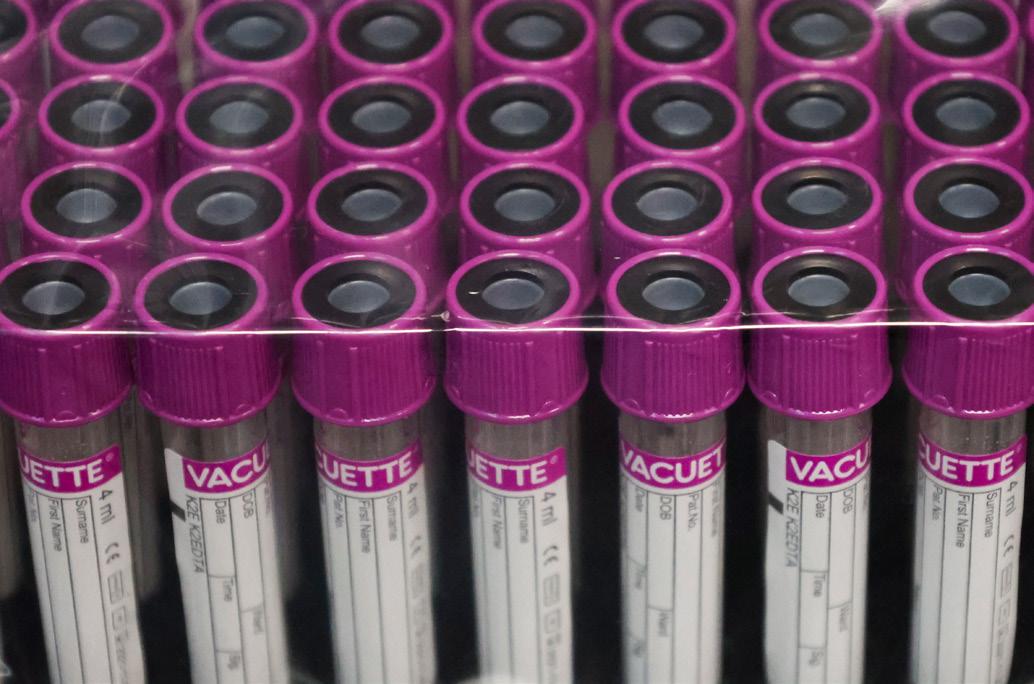

“...a lot of nurses are appalled by all the plastic waste...”
Summer / Fall 2023 : 11
Plastic images by Carlos Puma; background by Getty Images
Patient Earth
Potter and other climate activist nurses met in Montreal at the International Council of Nurses, where she helped to lead a symposium on nursing for planetary health and well-being.
“ICN has adopted planetary health as a global concern,” says Potter. “We met with the executive team of the ICN and have been working with a team of nursing experts to teach

purchasing power as educated consumers in our workplaces.”
Dele Ogunseitan, professor of population health and disease prevention at UCI, is convinced that healthcare professionals are uniquely placed to steer institutions with large carbon footprints to do a better by the planet. Ogunseitan serves as the school’s representative for the University of California Center for Climate, Health, and Equity. The organization is currently working to organize climate ambassadors from all the health sciences schools in the UC system to develop curricula on the topics of climate change and planetary health.
“I think most of the professions, including basic sciences and engineering, have been addressing climate change as an imminent threat for three decades at least,” Ogunseitan says. “The evidence is increasingly overwhelming, and now I think the health sciences in general have a role to play in not only educating the public, but increasingly in responding to climate disasters, including forest fires that cause air pollution and respiratory diseases and for young people mental health issues about a future that may be up in flames.”

the international nursing community about how to apply planetary health to research, teaching, policy, and practice.”
Also working to organize nurses into an effective environmental activist contingent is Katie Huffling, executive director of the Washington, D.C.-based Alliance of Nurses for Healthy Environments. The organization was created 15 years ago during a meeting of several major U.S. nursing organizations, labor unions and environmental groups.
“So many of the areas that we work on – clean air, clean water, toxic chemicals, household sustainability – those issues are all related to climate change,” Huffling says. “Looking at a hospital, a lot of our nurses are appalled by all the plastic waste, which is made up of petroleum products coming from fossil fuel extraction. So, we are really thinking about our
Because of the nature of their profession, nurses are perfectly suited to provide the perspective necessary to tackle the interrelated issues of planetary and human health. “I think nursing is in a very unique position to lead this movement,” says Potter. “We have always been systems thinkers: You can’t nurse by just thinking about the minutiae. The patient has a history that comes with them and we nurse in the context that comes with them. Every community we care about lives in and is connected to the environment and we also need to nurse that. Knowledge and leadership, ways of being and thinking are needed now more than ever.”
In her role at Providence, Beth Schenk is supervising a radical campaign announced on Earth Day 2021 to make the hospital chain not just carbon-neutral but carbon-negative by 2030. Providence has pledged to reduce greenhouse emissions by 70 percent and cut in half the volume of waste it sends to hazardous materials and landfill dumpsites by purchasing less
NGO public health officials in Kiribati, one of the world’s most vulnerable nations to climate change (WHO)
12 : Humanitas
Photo by Yoshi Shimizu © 2023
Architect
Patient Earth

UCI is also playing a leading role in weaning the U.S. healthcare industry off greenhouse emissions. In 2010, the university joined 150 other campuses, hotel chains and factories to participate in then-President Obama’s Better Building Challenge by pledging to improve its energy efficiency by 20 percent by 2020. “We did it by the end of 2013,” says Wendell Brase, UCI’s Associate Chancellor for Sustainability.
UCI Medical Center has implemented recycling and employee commuter programs to help reduce its carbon footprint, while also investing in energy-saving infrastructure that helps minimize its use of fossil fuels.
According to Joe Brothman, director of facilities and general services at UCI Health, all electricity used by the facility is purchased from 100 percent sustainable sources.
the energy we can on campus through solar, and the rest by purchasing sustainably produced electricity, so that it will be a green facility with no carbon powering its operation.”
All these commitments are positive steps toward reducing the healthcare industry’s negative impact on planetary health. For those seeking to reimagine the way healthcare professionals and nurses in particular can help heal the planet, it’s long overdue. A philosopher
turned nurse, Dean Lazenby frames the challenge within a basic recognition of patient earth’s ontological status as a moral entity.
“The planet has a moral status of its own,” Lazenby says. “It is harmed when I do something harmful to it and benefits when I do something good to it. It hurts and regenerates and does all the things that a living, breathing creature does. A lot of working nurses don’t see this concept, and what we want to do for them is make it visible, not just in the curriculum but how we conduct ourselves in our daily lives, in our practice, and in this nursing school building.”
Additionally, Brothman says, UCI Health’s newest hospital in Irvine, scheduled to open in 2025, will be even more environmentally friendly. “It will be a fully electric campus, producing all

Leaders Wanted.
We produce leaders in research, education, and clinical practice. Leaders who champion collaborative, compassionate, and interdisciplinary evidence-based practice. Leaders who make an impact in their fields, in their communities, and in the world.
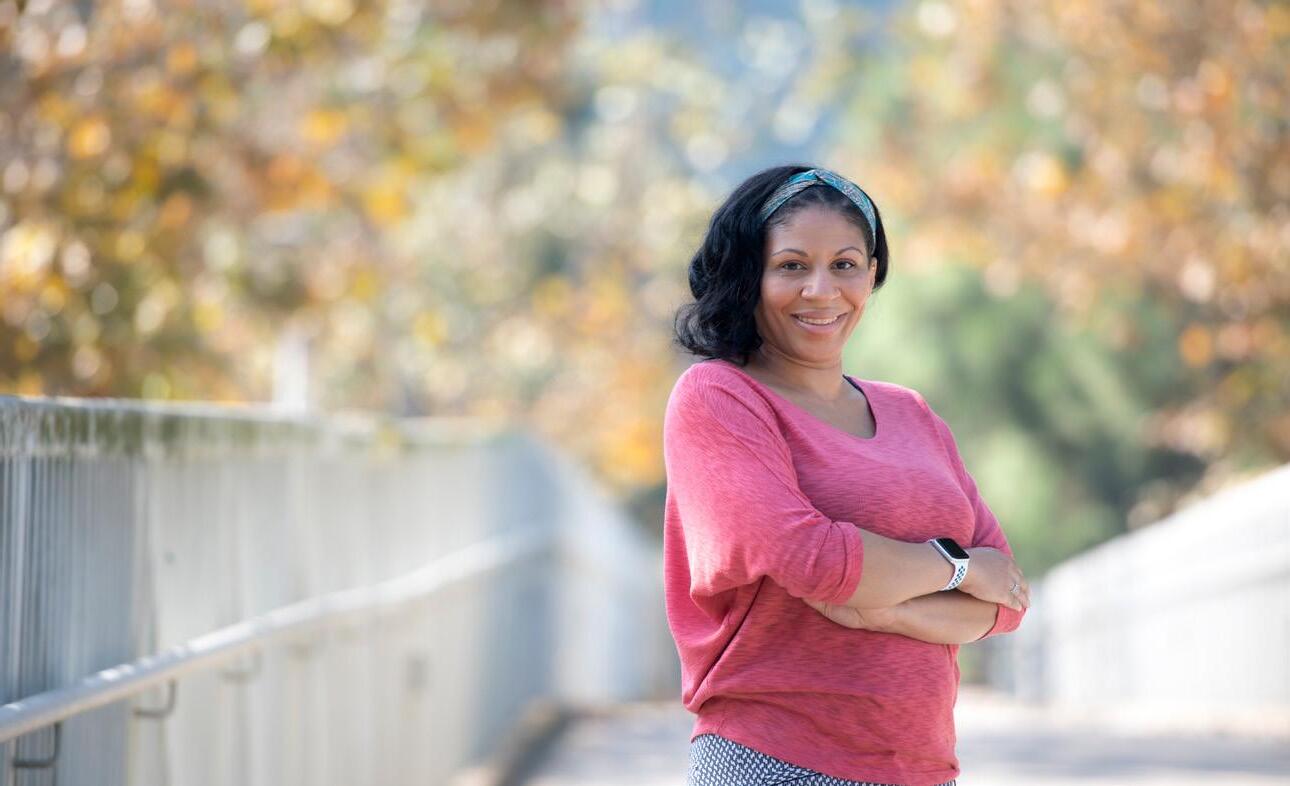
• 2-Year DNP Post-Master’s
• Program includes online
and hybrid courses •
• 3-Year DNP FNP Periodic on-campus
sessions
you ready to make a difference? Find out more.
• Clinical practicum placements Are
single use packaging, while also using recycled water and local food sources to reduce its impact on natural resources.
Health Summer / Fall 2023 : 13
“Every community we care about lives in and is connected to the environment.”
rendering for UCI
Towards this common aim, every nursing program will set its own priorities and apply its particular strengths and capabilities to meeting them.
For the UCI Sue & Bill Gross School of Nursing, delivering the highest standards of care to meet the needs specifically of minoritized people has been a core commitment throughout our history – a history whose beginnings stretch back further into our community than the relative youth of our school would suggest. We are a small school, and thus well
Additionally, global issues such as extreme weather events and the rapid spread of new diseases threaten human health, particularly for those who are most vulnerable. The nursing profession does not always see the earth’s health as a central concern, but as the disproportionate impact of climate change on people who are already vulnerable becomes increasingly impossible to ignore, this position must rapidly change. Sustainability is nursing’s concern.
In tackling the healthcare challenges that we face, there are new technologies and techniques that hold great promise for advancing nursing research, and for personalizing healthcare at sustainable cost with improved outcomes that address health equity. Yet investment, education, skills
With Humanity in Mind
versed in the necessity of using our strengths strategically to maximize the impact of our research and of our teaching. But reducing vulnerability for those in most need – and indeed, understanding, anticipating, and alleviating their needs at source – remains the overarching theme of our work.
There are, of course, enormous challenges to be faced. Many of these challenges are shared by schools of nursing across the country – and the world. At the time of my writing this, the vulnerability that nurses seek to lessen is deepening for many people – particularly in the wake of the Covid pandemic and its downstream economic challenges. This deepening vulnerability unequally affects the most vulnerable – the very young and very old, people with fewer or no resources, the unhoused, the chronically ill, and minoritized people, among others. As a result, such people – and there are millions of them in the U.S. alone – suffer increasingly poor health and die increasingly young.
development, research and collaboration are all required to maximize the usefulness of such innovations for the benefit of all people. This, too, is nursing’s concern.
During the Covid pandemic, it was made more evident than ever that nurses are the backbone of the world’s healthcare system. Despite this, the profession is threatened. Burnout imperils nursing careers, creating an intractable gap between demand and supply. Shockingly, investment in nursing is in decline. Universities’ investment in educating future nurses does not match the importance of the profession to the public’s health and, in turn, to the health of society, which is essential for a good society. Often those who hold the levers of power, in healthcare systems and in universities, do not see the simple truth: without nurses there cannot be a good society.
Dean Mark Lazenby introduces the five-year manifesto of the University of California’s youngest nursing school.
During the Covid pandemic, it was made more evident than ever that nurses are the backbone of the world’s healthcare system.
14 : Humanitas
Every nursing program strives to give students the knowledge and skills they need to provide good nursing care.
This, then, is our manifesto:
Over the next five years, we are committed to shining a light on the importance of investing in nursing. We leverage our contact with healthcare systems, government officials, and policy makers, and we will advocate for policy change by providing evidence of nursing’s positive effects on the system and on society. We will advocate for increased investment.
At our school, we will develop awareness of the direct relationship between climate change and the vulnerability of the populations we serve. We will collaborate with our campus and health center partners to reduce our own impact on the health of our world.
We will research and educate our students in these technologies and collaborate with our clinical and campus partners to translate them into practice. We will ensure that the most vulnerable remain at all times central to the technological development of nursing care. These are our goals as we commit to living them.
We know that across our nation and throughout the profession worldwide, our fellow nurses and nurse educators will recognize many of these goals as their own. While the precise emphasis of each institution’s contributions may differ – whether we prioritise expanding the workforce, generating knowledge, producing nurse leaders, or advocating for change – we believe that speaking together – as the one voice of nursing – we speak on behalf of a good society, a society in which we all would wish to live. This is the power of a manifesto: it envisions a better world and provides a guide for us individually about how to work toward that end.
In five years we may look back and find that the Sue & Bill Gross School of Nursing has not accomplished all that we dream of accomplishing now. We can, however, be confident that through nursing leadership, advocacy, education, collaboration, innovation, and research, our school has the power and determination to amplify the impact of nursing on health. The ultimate measure of whether we were true to our intentions and beliefs, as laid out in this manifesto, is whether, in five years, we can say that we did what we did with humanity in mind.
At the UCI Sue & Bill Gross School of Nursing, in our research and in our practice, we focus on individuals, families, and communities who are most vulnerable. And we will educate generations of nurse leaders who are prepared to meet challenges that we, their educators, cannot yet see.
Summer / Fall 2023 : 15
GOING FORWARD TOGETHER… with Humanity in Mind

The priorities of the UCI Sue & Bill Gross School of Nursing are shared throughout the profession. All are for the good of humanity. In these pages, we detail these priorities, inviting our colleagues and collaborators in healthcare to join with us in our efforts, wherever synergies can be found.

LESSEN
Nurses address injuries…thus, we address wrongs. Injustice and injury share the same stem. There are many ways to address wrongs, but at the Sue & Bill Gross School of Nursing we have chosen to address wrongs, and the injuries they result in, through the lens of social and racial justice.
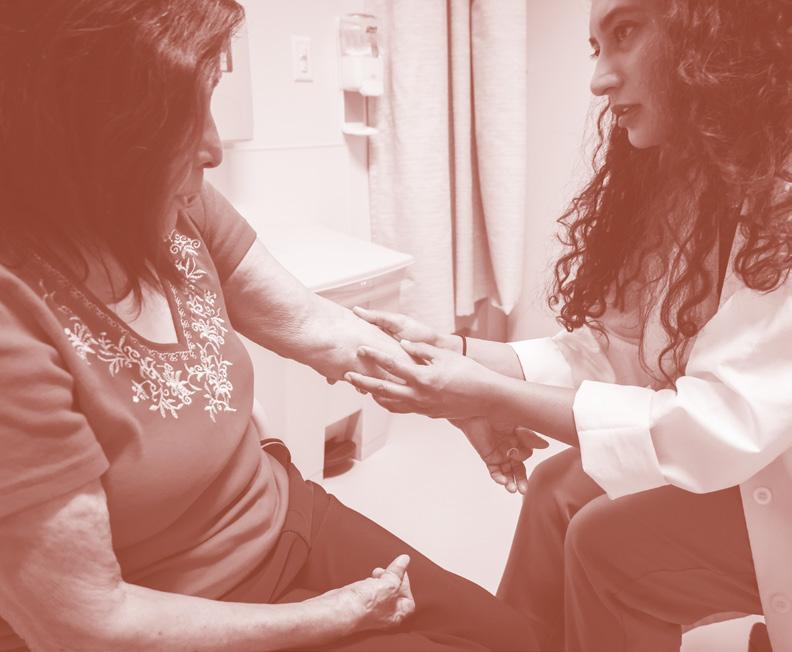
We recognize the degree to which social and racial injustices, and individual and structural racism, create and compound vulnerability – over multiple generations –in our world today.

Lessening human vulnerability through

WE CREATE LEADERS
Nurse leaders with advanced qualifications raise standards and provide opportunities in the workplace, even for those who do not choose to go beyond an entry-level qualification.
We emphasize the opportunities and necessity for nurses to pursue leadership careers focused on creating a healthier and more just society.
We aim to educate and inspire nurses to lead on matters of justice.
Our graduates can be confident in leading within the profession, and of advocating for the conditions in which nurses do their vital work of care.
TO
HUMAN VULNERABILITY IS AN AMBITIOUS AIM. We are not new to this aim: our work has long begun.
Left: Chief Mutáwi Mutáhash (Many Hearts) Marilynn “Lynn” Malerba, cardiac nurse, US Department of Treasury, 18th Chief of the Mohegan Tribe.
Right: Nurse Jeffrey Vu, Director of Clinical Services for Orange County Public Health
Classroon (center) and Jeffrey Vu (right) Nurse (top) by Carlos Puma; Lynn Malerba bt Dept of Treasury
16 : Humanitas
WE
STRIVE FOR INCLUSIVE EXCELLENCE AND ANTIRACISM
Nursing programs’ curricula and the work of clinical and academic researchers must be regularly evaluated and adjusted to ensure that racial and social justice concerns are always made visible.
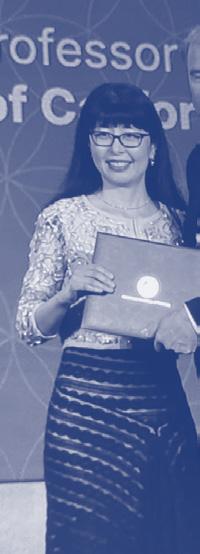

We are a profession that cares for all members of society: Nursing should reflect the community.
the lens of social and racial justice and antiracism
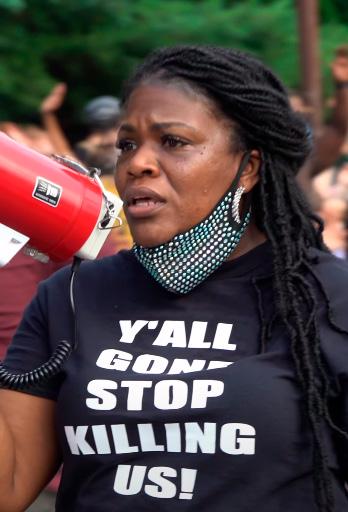
It is a significant priority to recruit and retain a diversity of staff, faculty, and students, and to ensure that people feel a sense of belonging in their place of work, study or in any other interaction with us.

The Sue & Bill Gross School of nursing has made it a priority to ensure that every aspect of our education, practice, and research is such that we are both inclusive and representative of the full range of communities we serve – and indeed, of the country we live in.
Our patients need to feel heard and understood; never more so than when those patients have experienced racism, quite probably throughout their entire lives.
Nurse Cori Bush, US House of Representatives for Missouri’s First District
Assistant Professor Dawn Bounds and Associate Professor Yuqing Guo inducted as fellows in the American Academy of Nursing
Sue & Bill Gross School of Nursing MS nursing students
Cori Bush: Craig Currie via Photo News 247, Portraits
Bounds
Nursing class by
Puma
courtesy of
and Guo,
Carlos
Summer / Fall 2023 : 17
WE SHINE A LIGHT
Every day, nurses work with society’s most ignored and invisible people: people who find themselves excluded from systems of housing, employment, healthcare, food security, or social services because of their physical location, race, ethnicity, religion, economic status, age, the language that they speak, or some other factor. We seek to shine a light on their lives and their experience.
Nursing institutions must ensure that the results of their research are seen by
administrators and policy makers at the highest level appropriate.
We do not accept that things are as they should be.
• We see each other, human to human –we are there for each other
• We advocate for others, as individuals, to get the care and assistance that they need
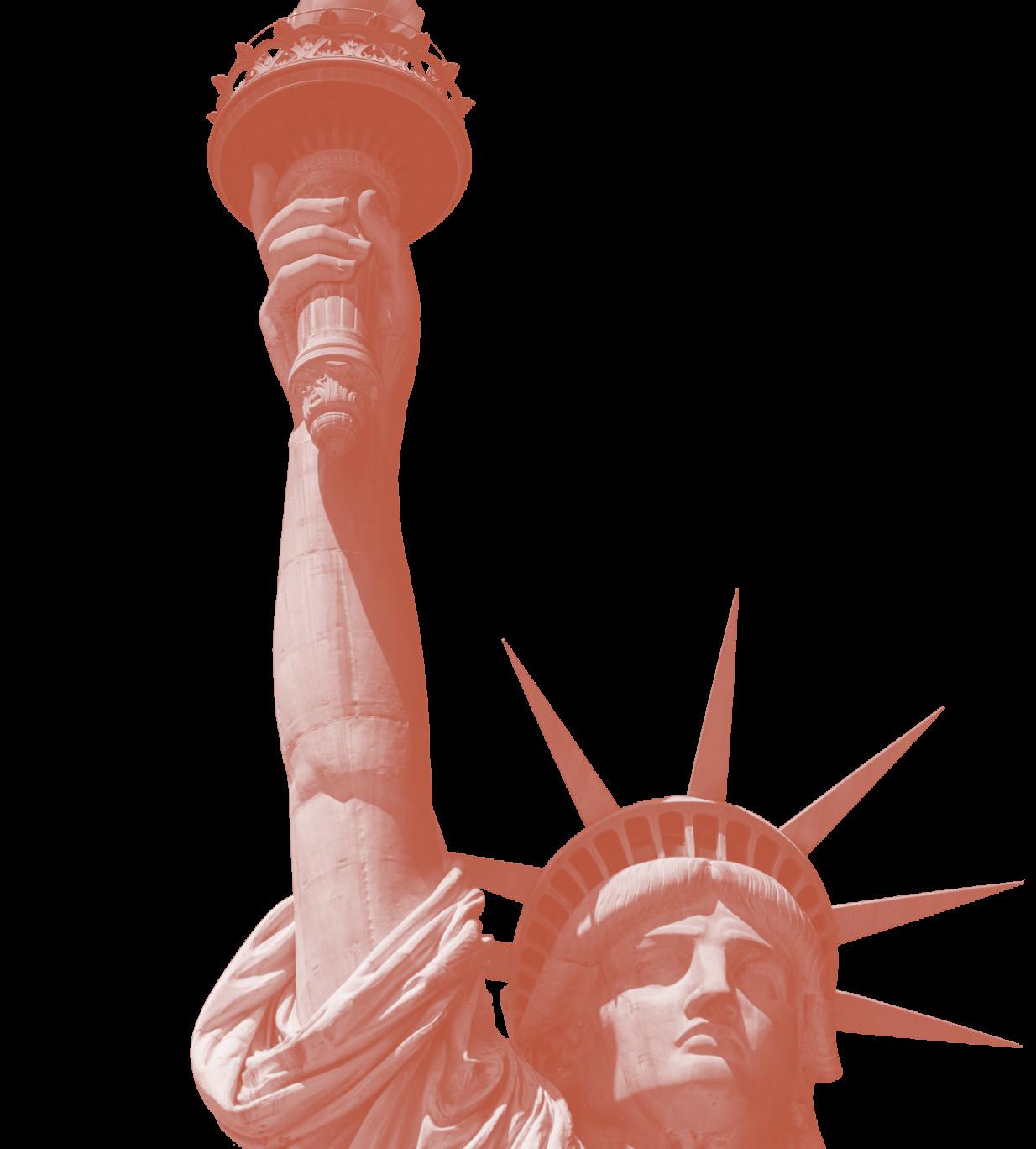
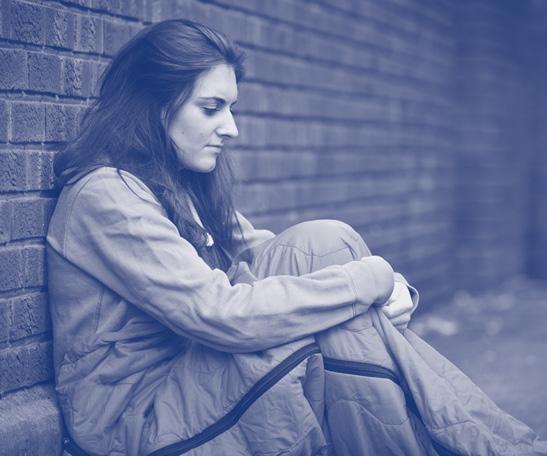

• In our clinical practice and research, we identify, examine, and challenge the experiences that others face.
WE LEVERAGE TECHNOLOGY Making the invisible...
Informatics gives access to massive datasets in which, for the first time, the effects of care (and lack of care) are made numerically visible without the need to rely on randomized control trials, which are rarely practical or ethical as a means of investigating health equity.
Nurses must be involved in such research to ensure that the right questions are being asked of the data, the right models designed.
We amass evidence that supports health equity, and shows the work that nurses have long been doing in the shadows.
Much nursing research has historically relied on qualitative reporting and analysis to provide eloquent evidence on a case-by-case basis. The rise of informatics and data technology gives nurse researchers the opportunity to analyze and represent care and wellbeing in quantitative terms – a powerful tool.

The associated fields of AI and wearable technology are opening new avenues for responsive, personalized treatment that does not require the daily presence of a health professional, holding out the promise of care that is both sophisticated and sustainable.
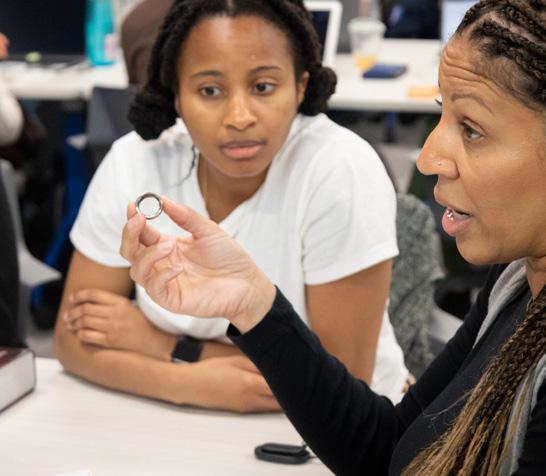
As the potential of these developments grows, the importance of inclusion is amplified as never before, and inclusion concerns nurses.
THE SUE & BILL GROSS SCHOOL OF NURSING HAS A REPUTATION FOR COMPASSIONATE CARE AND ADVOCACY THAT IS OLDER THAN THE SCHOOL ITSELF.
Jung In Park and Amir Rahmani, professors at the Sue & Bill Gross School of Nursing
Wearable tech used for GRIT, a pilot project to reduce the effects of trauma on teens
GOING FORWARD TOGETHER… with Humanity in Mind
Statue of Liberty : George Hodan, Informatics: Park and Amir, Bounds by Carols Puma; Homeless Woman
/ Ian
Allenden Dreamstime
18 : Humanitas
WE VALUE OURSELVES
Legislative and policy changes are needed to empower nurses to practice most effectively, and to the full extent of their license. In the U.S., California lags behind many other states in the restraints it places on the independent practice of nurse practitioners.
The devastation wreaked by Covid brought shortfalls in nurse recruitment and high rates of burnout to the national headlines. We seek to investigate the difference between a burnout situation and one in which, however difficult, nurses feel able to continue.
Nurses will always need:
• role models and mentors to guide them in meeting their commitment to patients, often in extremely difficult circumstances
• conditions in which good patient care is possible
• educational opportunities and a professional development infrastructure to progress, and feel fulfilled by, their careers
• recognition from their colleagues in healthcare –especially medicine and administration –in academia, and in government, for the difference that they make.
...visible
Nurses are better placed to cover the population’s healthcare needs than any other healthcare professional


Authors: Claudia B. Maier, Linda H. Aiken,
Publication: The European Journal of Public Health
Mutually collaborative relationships between nurses and universities, and nurses and other healthcare providers and researchers, benefit everyone.
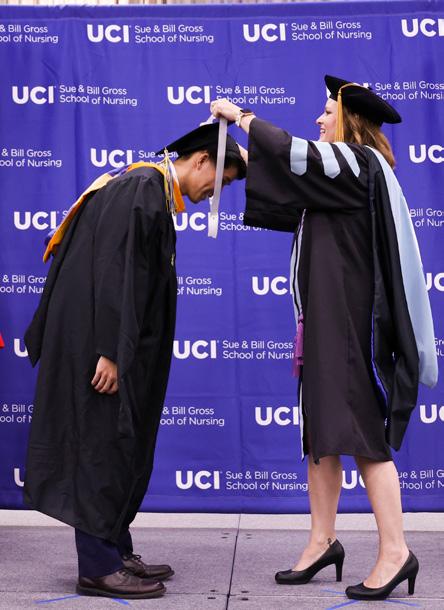
Graduation by Carols Pum a; Nurse photo courtesy of Victus Global Botswana Organization, Chart graphic Copyright © 2016, Oxford University Press
Providers of professional development in nursing, medicine, pharmacy, public health, health systems, and management must join forces to help improve nurses’ workplace satisfaction and their ability to do the work they have been trained to do. It is as important for our colleagues in other disciplines to collaborate with us as it is for us to work with them.
Summer / Fall 2023 : 19
WE SEEK OUT KNOWLEDGE
We live at a time in which all human health is inextricably involved in another crisis: the crisis of planetary health that has already begun.
Climate change affects minoritized populations first and most severely. This means that concern for the world’s health is doubly within the remit of nurses and nursing institutions.

We must accelerate our efforts to educate ourselves as to what form environmental threats to health may take, whether through disease or disaster, or through the long-term erosion of health caused by pollution and a degraded environment.

To be a nurse is to help other humans. This promise draws
The world’s health…
WE CARE FOR OUR WORLD
Nurses know that individual acts can make an important difference: washing hands really does save lives. Behavior change can be inconvenient, and small efforts can feel futile when problems are global and policies lag behind the necessary practice. Yet in matters of environmental health, we are determined to learn, and we must be prepared to lead.
Nurses are individuals: the most populous profession in the world. At UCI, we are also teams; a school; a medical center; a campus; a university. Individually and together, we can make an impact, and show our students that we care about their future. Other schools, hospitals, clinics, and universities can and must do the same.
people to the profession –between 60-80% of nursing students (depending on the source) state the desire to help others as their primary motivation for choosing nursing as a career. Let’s look squarely at nursing’s role in ameliorating the impact of environmental catastrophe on society’s most vulnerable people.
We are committed, through our actions, to sending a positive message that change is not only necessary, but achievable.
GOING FORWARD TOGETHER… with Humanity in Mind
20 : Humanitas
Tijuana, Mexico. Climate migration is contributing to expanding homeless populations outside the borders of countries in the global north Migrants and drought by Unsplash; recycling art by elenabs at iStock
WE ARE A WORLD COMMUNITY
Health inequities caused and compounded by social and racial injustice are (unfortunately) by no means confined to our county, state, or country.
At the Sue & Bill Gross School of Nursing, faculty are currently involved with projects in Botswana, Guyana, India, and Korea, to name a few.
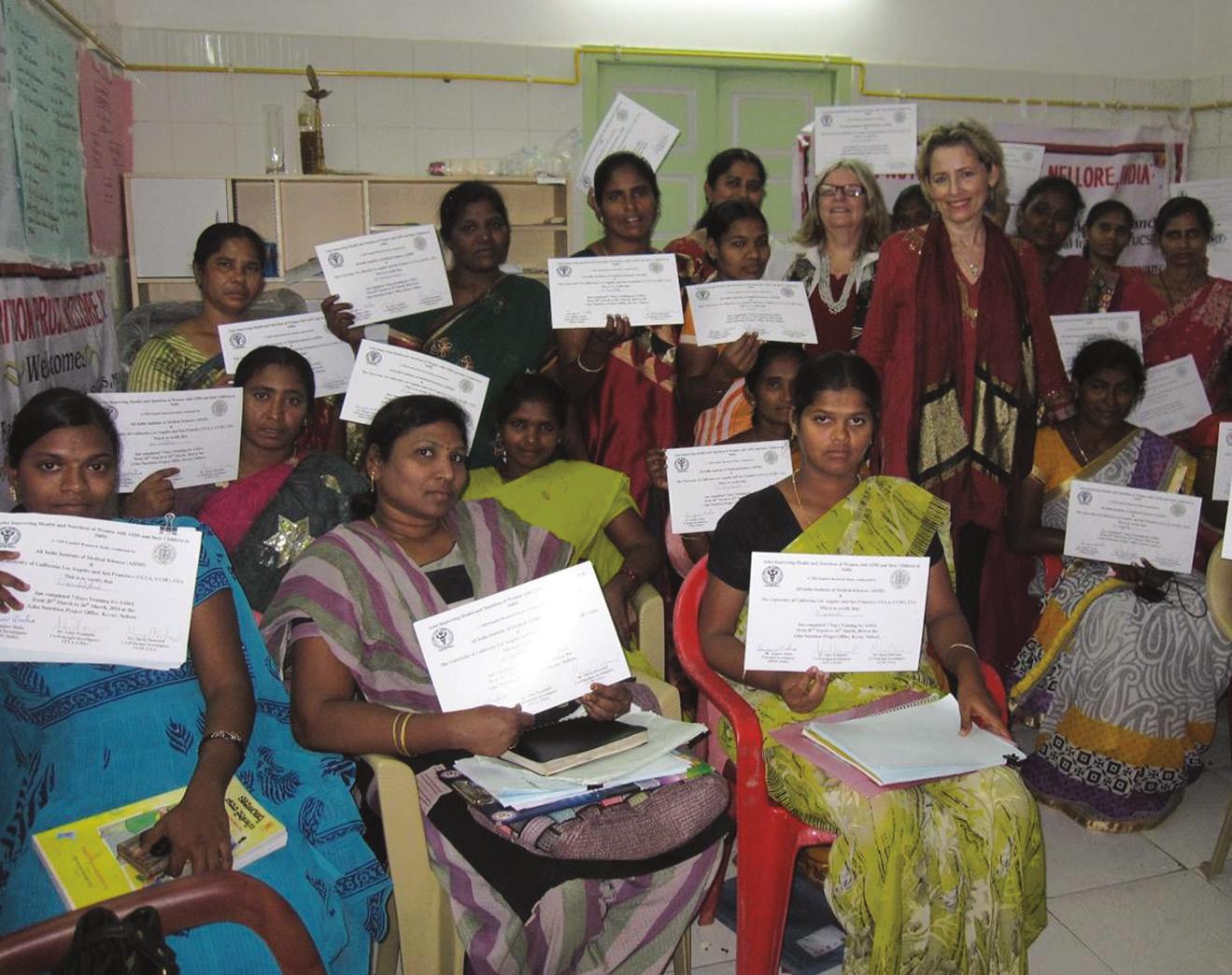
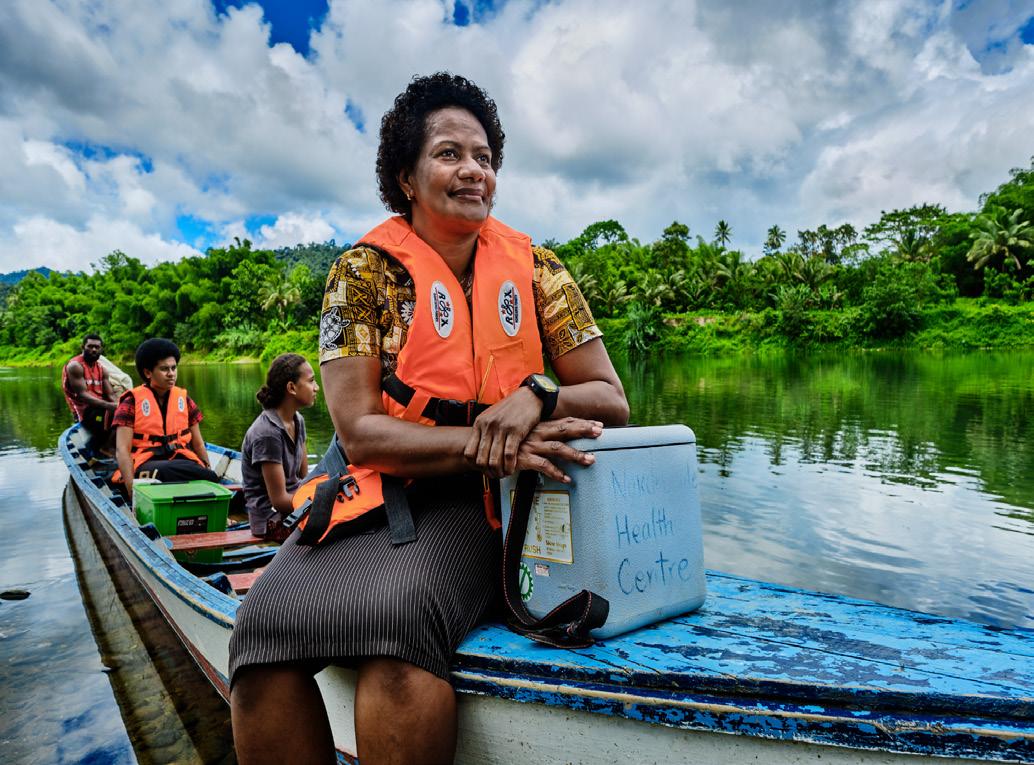

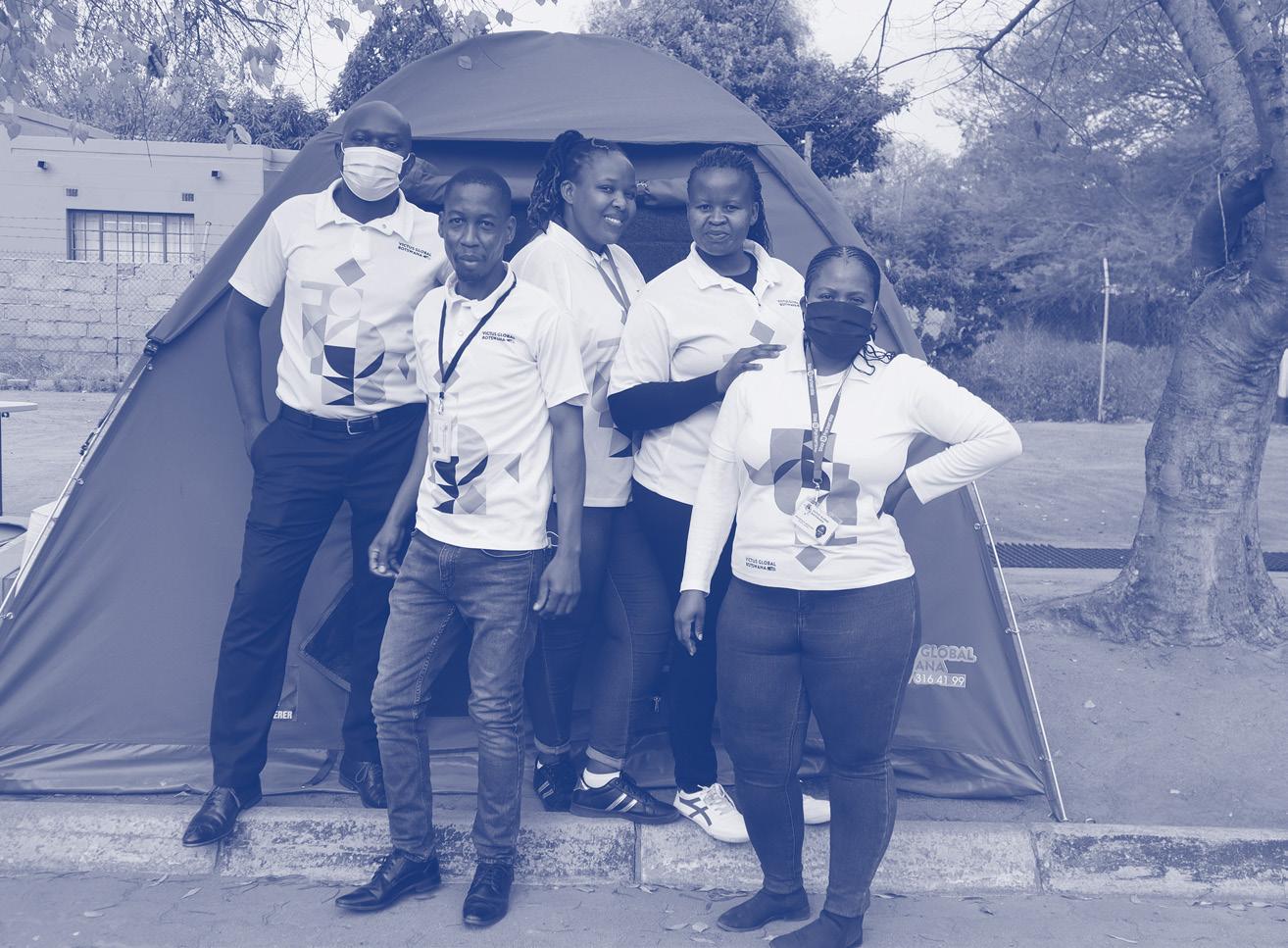
…is human health
We are a rigorous academic organization within a world-class university. Under the strategy implemented by our founding dean, Adey Nyamathi, our first five years have been characterized by impressive growth in the quantity and scope of our research. With this expansion comes greatly increased potential for global partnerships, collaboration, and exchange.
We will continue to increase our national and international participation, and welcome to our campus colleagues, researchers, and students from around the globe. In the same way that the planet’s health is human health, the health of all humans around the globe is the health of every single one of us.
Indian photos by Adey Nyamathi, Botswana photo courtesy of Victus Global Botswana Organization, Health worker in canoe by Yoshi Shimizu © 2023
Sue & Bill Gross School of Nursing founding dean Adey Nyamathi and UCLA nutrition scientist Catherine Carpenter, with staff who have completed training for an NIH-funded project to improve the health of women living with HIV (as above)
A team of health workers provide a vaccination outreach service to remote villages in Fiji
Improving the economic self-sufficiency of women living with HIV is an important driver for improved health outcomes
Summer / Fall 2023 : 21
Victus Global Botswana Organisation workers on a collaborative research project on TB and Covid
WE TARGET AND CONTROL OUR GROWTH
Throughout the U.S., schools of nursing strive to increase capacity to meet the challenges to the profession and to humanity. At the Sue & Bill Gross School of Nursing, we must increase capacity while retaining the rigor, intimacy, and the personalized experience that are currently hallmarks of our school. Collaboration is key to increasing capacity.
Excellence and focus draw funds: by pinpointing our specialties and by increasing the numbers of nurse leaders we educate and train, we similarly increase the scope of sources from which we attract funding to our school. We are confident that our goals can be met through targeted and strategic expansion.

Increasing capacity to support our ambitions
WE ATTRACT INCREASED INVESTMENT
Nursing as a whole requires greater support to answer the needs of our society. In this, all nursing schools are our colleagues, and we speak with one voice. We tirelessly promote the profession of nursing and the importance of nursing research and education to human health in Orange County, in California, and in the country and society in which we all live.
Alumni and faculty alike are our advocates and proof of excellence.
We continue to identify and consolidate relationships with supporters and champions locally and nationally, pursuing funds for the essential work of nurses everywhere.
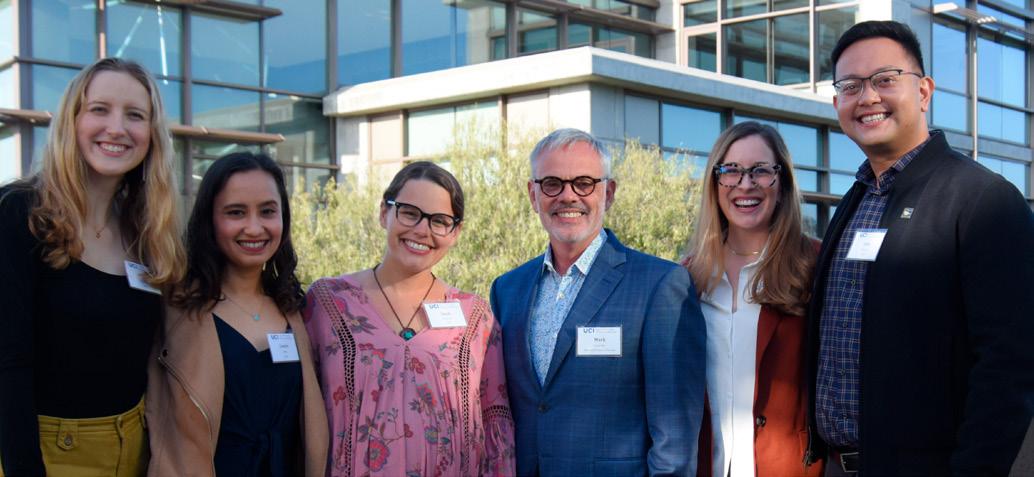
We exist to lessen vulnerability, to promote social, racial, and environmental justice, and to deliver compassionate nursing care of the highest standard in the most equitable and accessible way possible – for the sake of humanity.

Our focus is on growth that makes a difference –growth in the next generation of leaders, growth in nursing knowledge.
Classroom by Carlos Puma; Alumni photo by Elin Slovick
GOING FORWARD TOGETHER… with Humanity in Mind
22 : Humanitas
Alumni board members (from left) with Dean Lazenby (center), Hayley Harkins (’22), Connie Betz (‘13), Sarah Waldron (‘13), Cassidie Thomas (‘13), John Aldrich Alejandro (’12, ‘16)
WHY NURSING?
Nursing is everything for everyone. It’s a career that is rewarding. And it’s essential for good health. I don’t know where we would be as a society without the sheer hospitality of nursing.
Rev. Chineta Goodjoin Pastor, New Hope Presbytarian Church
Today, UCI Medical Center in Orange, California, is well known as a successful teaching and research hospital. It is part of UCI Health, based at the University of California, Irvine, which includes, most recently, the Sue & Bill Gross School of Nursing, a research-intensive school with competitive student admissions. The hospital’s Magnet designation means that it performs at a standard by which patients can expect to benchmark the quality of nursing care as defined by the American Nursing Credentialling Center (ANCC). But in 1984, when Ellen Lewis arrived from Milwaukee County Regional Medical Center to take up her new role as UCI Medical Center’s director of nursing and senior associate director, the hospital was considered locally to be the care center of last resort, known by the unflattering nickname of “The Farm.” Its patients were, by and large, people with nowhere else to go.
Lewis’s administrative directive was to develop and implement the nursing standards expected at a university-level medical center.

“There were some great nurses working at the hospital,” Lewis recalls. “The staff were wonderful, but the level of qualification was extremely low when benchmarked against other states, or even against Northern California.”
Nursing is about caring and fairness, which have been essential to humanity for as long as we have existed. Nurses’ work promotes health and care for the sick and injured in any setting we work in, whether that’s on an individual or family or community or national or international level. Although I’ve had three distinct professional roles in my nursing career, each was always about caring. Worldwide, we need to support and value the profession of nursing.
Diane Drake, PhD, RN Clinical Faculty, Sue & Bill Gross School of Nursing Sponsor: PhD student nursing research scholarship
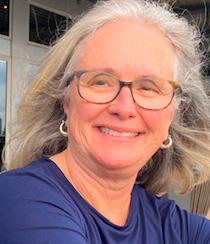
Local, national, and international nurse shortages are rarely far from the headlines, yet it’s not always made clear that university-level nursing programs and nursing research are vital to the health of the profession. As the story of the UCI Sue & Bill Gross School of Nursing shows, the argument for academic nursing needs to be won again and again.
Summer / Fall 2023 : 23
Photo of first graduating class of the Program in Nursing Science, UCI, courtesy of Ellen Lewis
Nurses are the backbone of the healthcare system and are present throughout a patient’s illness trajectory, whether that ends in recovery or death. Nurses not only possess the technical skill to render very complex care, but they must also develop skills in self centering and be able to remain fully present with patients in the most intimate circumstances that they ever face in life. I can’t think of a more honorable profession than nursing.
Paige Burtson, PhD (‘19), RN, NEA-BC Senior Director of Nursing, Inpatient Oncology, Jacobs Medical Center – UC San Diego Health

Lewis’s broad remit was also to investigate the feasibility of setting up a school of nursing at UCI, for which she knew she needed to demonstrate that nursing education and standards of patient care are inextricable from one another. Despite an immediate imperative to cut costs at the medical center, she set about recruiting a post-master’s clinical nurse specialist to every department, to role-model professional nursing.
Sourcing such nurses required a wide net: in the 20 years between UCI’s founding in 1964 and Lewis’s arrival in 1984, Orange County’s population had almost doubled – an increase of one million people – yet not a single educational institution in the county offered the opportunity for nursing qualification beyond community college level. The result was that any nurse who wished to develop their knowledge beyond a two-year RN certificate, or research any aspect of patient care, had to move elsewhere – and did.
“In California, every congressional district has a community college,” says Lewis, “and truly, there was a belief that that’s where nursing belongs. People think nurses just do bedpans. I have been asked by senior people at UCI, ‘Do nurses do research?’”
UCI’s founding chancellor, Daniel Aldrich, was emphatically not such a person: a school of nursing had always been part of his vision for the campus, as it was for the Irvine family who had sold their land to the University of California for a symbolic $1.00.

Aldrich and Lewis agreed that establishing an advanced nursing degree program within the existing UCI medical school would be a sensible first step towards meeting urgent local need for nurses’ education. And Lewis’s strategy of placing a qualified nurse specialist in every hospital department worked. The impact on standards of patient care was immediately apparent, winning the backing of hospital physicians for well-qualified nurses and for nursing education at UCI.
Thus began Lewis’s campaign to establish not just a program but an entire infrastructure for nurse training, education, and research that would make highly qualified care available to all citizens of Orange County, regardless of status, and provide a career path and opportunities that would help the county attract and retain the best of the profession. That effort has taken more than 30 years and involved many passionate advocates. Throughout those years, progress towards the ultimate goal – a school of nursing at UCI – was far from assured.
Susan Tiso, who retired as a professor from the Sue & Bill Gross School of Nursing in 2021, joined UCI from California State University, Long Beach in 1995. By this time, Lewis had succeeded
My grandmother, when she was young, wanted to be a nurse. Instead she became an artist and a patron of artists. However, she still always found a way to help people who were in need physically or socially. One of her great interests in founding the University of the California, Irvine was to have a medical school, a nursing school, and a hospital on campus. She was devoted to the health professions. Why nursing? Because caring for people is a beautiful act.
James Irvine Swinden President, Irvine Museum
24 : Humanitas
in establishing a state-funded post-master’s family nurse practitioner program led by Mary Knudtson as part of UCI medical school’s department of family medicine. They were soon joined by Tiso’s former student, Susanne Phillips. To augment admissions, the program joined forces with California State University, Fullerton after the first few years, finally going solo with UCI’s own program in nursing science in 2007.
As Tiso points out, raising standards and providing opportunities to nurses have always been central functions of university nursing, but throughout the course of her career, nursing education has also needed to keep pace with rapid growth in the complexity of patient care.

Nursing as a profession needs to be standing shoulder to shoulder with the medical profession. As a practicing clinician, it quickly became evident how dependent one is on nurses’ input and observation. Currently, advanced practice nurses see patients independently, can prescribe and engage in independent research. Today, nursing goes beyond direct patient care, and the legislature and the public need to be educated to understand this.
Feizal Waffarn, MD, MBA
Emeritus Professor of Pediatrics, UCI School of Medicine

Sponsor: Dorothy Waffarn scholarship for diverse master’s prepared students, emphasizing maternal and child health
“Healthcare becomes more complex with the increasing number of medications, drug interactions, and chronic diseases with intersecting problems – nurses need the science behind that,” she says. “Ellen [Lewis] had the foresight to say we need nurses educated at the baccalaureate level. She did a lot of work on what the workforce shortage was going to look like.”
People need avenues to show their compassion and love for the world, and the world needs their love and compassion. I chose nursing because I feel so full of compassion and love, and I want to share it and use it.
Jeffrey D. Vu, DNP, MBA, APRN, PHN, FNP-BC Director of Clinical Services for Orange County Public Health
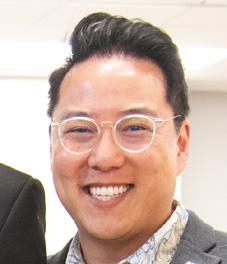
Dr. Vu earned his BS in ’09, the first graduating class, and his MS in ’14 from the then-Program in Nursing Science.
Finding funds for teaching and research, Tiso explains, isn’t the only aspect of nursing education that requires investment: compared to doctors, nursing students themselves are overwhelmingly more likely to originate from less well-off families, and the financial obstacles they face in becoming better nurses can be all too real.
“We’ve had students who have pulled themselves out of very challenging situations to be here,” she says. “Students who’ve been homeless, who’ve been raised with absent parents, who’ve pulled themselves up to come here because they have a passion for it. Nurses in graduate programs are trying to work, they’re often taking care of a family, they’ve maybe got elderly parents – and nurses are the ‘go-to’ person for care in a family.”
Feizal Waffarn, a consultant neonatal ICU physician and benefactor who serves on the Sue & Bill Gross School of Nursing’s dean’s cabinet, describes further how nurses from lower income groups may be lost to education unless there are funds available to help support their time at university.
“If a newly certified registered nurse goes and gets work, she’s bringing home money her family needs,” he says. “If she stays at university and gets better qualified, that immediate income is effectively lost: it’s called ‘lost opportunity costs.’ This is why donor support is so important for schools of nursing like UCI. We want to make sure the most able nurses have the opportunity to get qualified to their maximum potential.”
Photo courtesy of Ellen Lewis
Summer / Fall 2023 : 25
Ellen Lewis, whose decades-long campaign for nursing at UCI revolutionized the educational infrastructure for nurses in Orange County
Over 4 million strong [in the U.S.] and the most trusted professionals, nurses are key changemakers in the transition from a reactive/sick care model to a proactive/life care model where individuals take responsibility for their own health every day. Updates to nursing education as well as the use of technology are on the path forward to this change that will truly (and finally) transform healthcare in the US
Judy Murphy, DN (Hon Causa), RN, FACMI, FAAN Health IT Leader & Nurse Executive

In 2007, UCI’s program in nursing science began under the direction of Ellen Olshansky, who remained for seven years. The program provided an undergraduate degree course, a master’s program and, from 2013, a PhD program –all, as Olshansky says, “…without the predicted resources. The 2008 financial crash affected everything, and it was not possible to get funds for everything that we had been going to do.”

Despite its accumulating success, the significant funds needed to develop the nursing science program were not forthcoming. The future of nursing at UCI appeared to hang in the balance until, in 2016, a $40 million gift pledged by the William and Sue Gross Family Foundation changed everything. At last, 33 years after Lewis’s appointment to UCI Medical Center, her original aim was fulfilled. In 2017, the Sue & Bill Gross School of Nursing was founded at UCI.
The founding dean, Adey Nyamathi came to the school from UCLA to be greeted by, “a very passionate, very small group of faculty,” who had kept both their research and several thriving degree programs running in the intervening years, “bringing in students that were exceptional,” she says.
Nyamathi’s own career as a researcher – for which she is this year being honored with “Living Legend” status by the American Academy of Nursing – engrossed her completely: “I actually never thought about being a dean,” she says. Yet her research focus also meant she was ideally suited to build the new school’s research capacity, recruiting, and supporting exceptional academic and clinical faculty, and thus simultaneously enhancing student recruitment.
Nursing research differs from medical research in that it is specifically about wellbeing and care. As growing numbers of people live with complex combinations of physical and mental conditions, such care has increasingly left the hospital setting and involves patients’ real-life circumstances. For many patients, those circumstances are difficult and becoming more so, meaning
Nurses are known for their compassion. My mother was a nurse, and I was a nurse myself before I was a lawyer. I try to take that same compassion into the practice of law, understanding the sacred privilege it is to walk with people in the darkest valleys of their life. As a nurse and as a lawyer, my motivation has been the same: I want to make a difference in people’s lives. Supporting the compassionate nurses at UCI is one way I do that.
Jennifer Johnson, RN, JD Chair, Sue & Bill Gross School of Nursing Dean’s Cabinet Senior Member, The Law Office of Jennifer R. Johnson
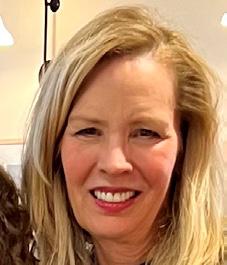
26 : Humanitas
Photo (far left) by Carlos Puma
Nursing is an excellent foundational education that leads to a fantastic range of opportunities. It prepares you for an incredibly flexible and varied career that leads anywhere from teaching as a university professor, to focusing on a clinical speciality such as trauma or critical care, to becoming a hospital administrator.
that nursing research investigates areas that are ever more urgent for large numbers of individuals as well as for society as a whole.
“Nurses do seem to gravitate towards health disparities research,” Nyamathi says. “Finding solutions and improving the lives of populations that deal with the most significant disadvantages. Community nursing has always been my passion, and I’ve always been interested in supportive health promotion –how can we help people make the best choices? We’re changing the way healthcare is delivered.”
Debra Mathias, MHSA, BSN President & CEO, Mathias Consulting & Research
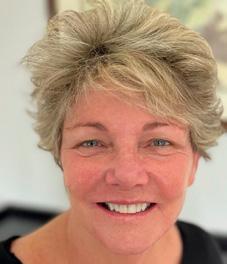
Nurses are united in their conviction that, wherever and however they work, care and compassion have always been and will always be the heart of the profession – which is exactly why research-based practice matters to nurses so much.
Mark Lazenby, the school’s current dean and Nyamathi’s successor, clarifies further: “Nurses’ compassion means wanting and needing to provide the best care possible – to promote or restore health or enable people to have peaceful deaths. Where will improvements in nursing care come from, if not from nursing research? Faculty at university-based schools of nursing educate their students on how to conduct research and quality improvement projects in real-world settings that elevate the level of nursing care for everyone, everywhere. What could be more compassionate – or more necessary – than that?”
Nurses provide highly technical and sophisticated day-to-day treatment, but I think it’s their personal touch that resonates with those under their care. The reality that patients remember their nurses hit home with me in the mid-to-late 1990s when I was asked to speak at the Richard Nixon Presidential Library by a local chapter of Vietnam Veterans of America. Off to the side of the auditorium sat three rows of disheveled looking men. I thought to myself that they were Vietnam vets with PTSD. My sense was that they couldn’t have cared less that I was a judge. But after I spoke and they realized I had served as a combat nurse in Vietnam, those men completely surrounded me as I stepped down from the dais. Each had to touch me somewhere, my arms, back, shoulders. One stroked his pointer finger over and over the back of my hand. I realized that these men had no good memory of their service in Vietnam except the nurses who took care of them. A few had tears in their eyes. One vet told me that as he was taken off the helicopter, he heard someone say, “He’s a goner,” but the nurse squeezed his wrist and whispered, “You’re going to make it. We’ll take care of you.” It was that soft touch and vote of confidence that the vet remembered.
Justice Eileen Moore, BA (‘75), JD California Court of Appeal
Summer / Fall 2023 : 27

Community
Illustration by Pat Redding Scanlon
Hopegrows in GRIT
She is reflecting on the career that has brought her to California and to GRIT, a pilot intervention that has the hope embodied by young people very much at its heart. Bounds’s aim in designing GRIT is to reduce or delay the welldocumented adoption of risky behaviors by adolescents who have experienced adversity. Behind the neutral language of research lies an urgent need: to break the cycle of despair for youths who have experienced the effects of – for example – prejudice, poverty (including homelessness), bereavement, violence, and addiction, by teaching them to cope with the resulting trauma in ways that do not damage them further.
A clear thematic narrative connects Bounds’s current body of work (GRIT is just one of several projects in progress) with her early career as a psychiatricmental health nurse practitioner in her native Chicago. There, when still a recently qualified nursing practitioner,
she worked for a mental health services contractor within the County Juvenile Detention Center. Despite appreciating her excellent colleagues, she soon realized that their collective effort was ultimately part of a system that was, “…not serving our children the way they deserve to be served.”
As she describes that formative experience, “We’d get kids stabilized and decrease meds, or get them to where their symptoms were subacute. They’d leave [the Juvenile Detention Center], their mental health needs were not taken care of, and they’d come back again: rinse and repeat.”
Furthermore, she remembers, she would, “…listen to their stories. Kids who would tell me that a friend or family member had been shot by police – back then, we didn’t have video to corroborate. Girls coming back to the center for status offences – they’d run away from home, or been present at a crime that a
boy had committed. The need for them to have people to support and love them was immense.”
The experience stayed with her throughout a subsequent PhD – through which she discovered a transformative passion for research – and a midpandemic move to California and the Sue & Bill Gross School of Nursing. In October 2021, she embarked on GRIT (Garnering Resilience In Traumatized youth and families – “I love an acronym,” says Bounds), partly in response to the California Surgeon General’s recommendations encapsulated in the “ACEs Aware” campaign. The Stress Busters advocated by ACEs Aware are all sensible, says Bounds, but it’s a “pet peeve” of hers that medical lifestyle advice is so often given without the guidance to help people put recommendations into practice. Designed from a nursing perspective, GRIT seeks, in part, to bridge that gap for a specifically vulnerable group:
“I love adolescents,” says Dawn Bounds, an assistant professor and psychiatric nursing researcher at the UCI Sue & Bill Gross School of Nursing. “There’s just so much energy and hope.”
A project to help traumatized adolescents cope with stress in healthy ways is also benefitting their caregivers and health worker peers.
Summer / Fall 2023 : 29
the at-risk teens.
The intervention pairs young people between 12 and 17 years of age with a “near-peer” – a college-age student with experience of similar adversity – plus a caregiver identified by participants themselves, often a parent. Screening of all participants, including caregivers, before, during and after the study enables Bounds and her team not only to assess the impact of their work, but to inform participants where they fall above a clinical threshold for any issue of which they may not be aware. Participants are involved in weekly health-coaching sessions and taught to use wearable stress-sensors and a specially designed app that helps them identify their own stress signifiers and deal with them in a healthy way. The resulting self-awareness and self-regulating techniques have the potential to help them negotiate subsequent life events with resilience.
Recruitment and barriers to participation are among the critical aspects Bounds seeks to refine, with a view to
making the pilot deliverable at scale.
“The community is my home,” Bounds explains. “Juvenile detention centers, schools, homeless shelters – the people I work with are not coming to the office to see me. I was working in Chicago for over 20 years, and it takes time to build those relationships. We learned very quickly that to overcome barriers to participation, GRIT needed to be completely community-based, that incentives for participation needed to be higher – that’s happening now.”
When it came to finding students to train as health workers for the study –the “near peers” from the nursing school –Bounds deliberately recruited with adversity in mind: “Minoritized backgrounds were encouraged to apply – single-parent background, first generation at college… I listed them all out,” she says. She was determined not only to match mentors with participants but also “to make sure that people who don’t always get these opportunities be exposed to this. I never knew about research as a student in college, and I love it –who knew? It changed my life. We need more people like me who do this work.”
The response to her recruitment appeal was “overwhelming,” she recalls. “Students sharing their stories of adversity and challenge and why they wanted to do this work. They really have a heart for
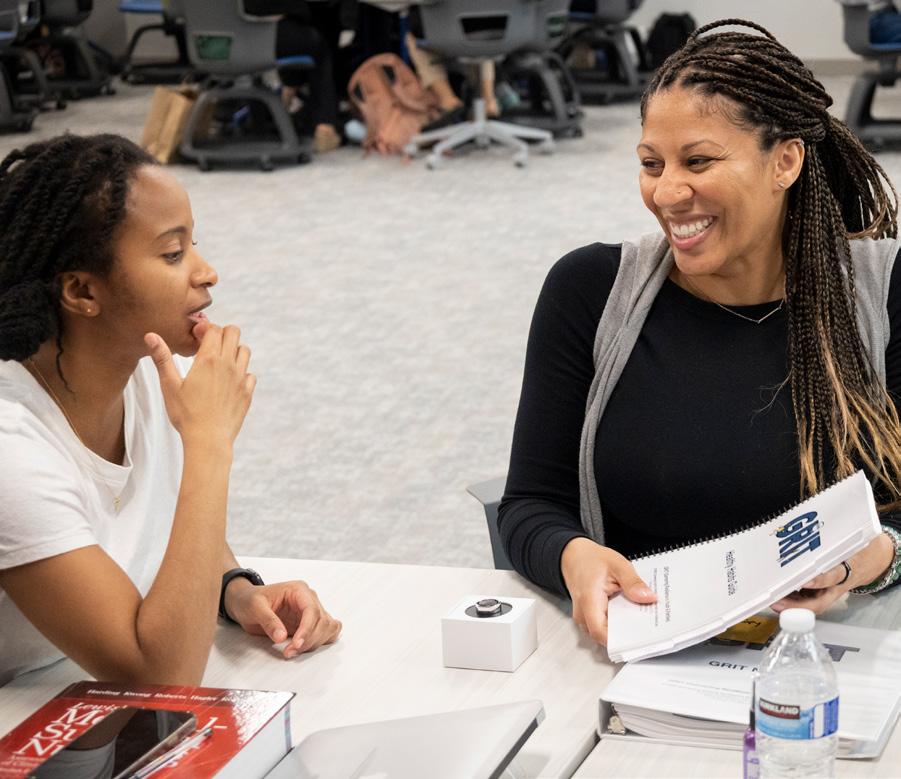
it and not only that – doing it has benefitted them, too.”
Student research, encouraged by Bounds, has analyzed the effect of participation on the near-peer group and identified that they have begun incorporating those same lifestyle changes they are helping engender in the teenage participants. “There’s an expectation that they live it,” says Bounds, and early evidence indicates that they are.


As with the health workers, the wellbeing of caregivers has been an integral aspect of GRIT from the start. As Bounds works to scale up the study,
she’s pleased to see early indications of positive impact in the initial, albeit small, sample.
“We know that trauma is intergenerational,”
Assistant professor Dawn Bounds at work
Final year nursing student Leo Dao and public health major Nayeli Inzunza are involved in GRIT as near-peer mentors
Comfort boxes were developed with teens at one of the partner schools involved in the GRIT program
30 : Humanitas
Top colored wall photo by Antoine Evans, Classroom panorama by Dawn Bounds, Dawn Bounds portrait by Carlos Puma
Community

she says. “For the adolescents, there’s a need for co-regulation: to be in a space with someone who’s able to self-regulate. If the parent hasn’t done that before, we are seeing that they can learn now. Before participation begins, we screen for depression and anxiety, PTSD…. One family stands out for me because the mother was above our threshold at that initial screening and now she is subclinical. To see the numbers go down, and be able to share that with her – that’s really exciting.”

For Bounds, GRIT is just one example of her ongoing mission to analyze and ameliorate the effects of adversity on young people and their

A poster produced by near peers involved in the GRIT program. The poster describes the effects of taking part in the program on the near peers themselves
mental health. She continues to work with teens who have escaped abusive situations and has embarked on a major study of online adolescent risk: Project REVIVE, funded by the Betty Irene Moore Fellowship.
“Adversity looks different following the pandemic,” she points out. “We need to understand that better – what does risk look like now? Resilience? I’m interested in so many different things.”
JOIN OUR REVOLUTION TO TRANSFORM HEALTHCARE OUTCOMES & INSPIRE THE NEXT GENERATION OF NURSE LEADERS. To learn more about the impact of your giving to the UCI Sue & Bill Gross School of Nursingcontact Karen Francis at @karenrf@uci.edu, (940) 705-7121 nursing.uci.edu DONATE NOW 80% 20% 90% Ad h dh d p (ACE p b h h h t h y h d 60% d 2 ACE d b d h h d dy wh h ha e been a soc ated w h sk behav o s menta hea h symp om and ch on c ne s 3 Garne ng Re ence n T auma zed You h d F GR T 8- k p y h d d g d t dd th d t th d t wh d d h gh d g ACE g d h ca eg ve s Rec u ed a f e each nd dua ha hared he e pe ences rom ndergo ng the GR T hea th coach ng f p d p g h h t d h p d GR T d -b d p t t h da y v s a d h w h y c p d w h h ACEs ntroduction A t t f th d t d t b h th oa hes i g o e mod e a d b -weekl g o p mee ngs The on ne t a n ng modu es nc uded top c on ACEs & Tox c S ress HRV & Hear Math Techn ques nc us ve Exce ence mp c B a ntersect ona y Hea thy Hab ts CBT P nc p es S eep Hyg ene ACT P nc p es and Mo va ona nte v ew ng As a pa t of the t a n ng process studen hea h coach a nee we e q d t d v p h w - d f v g p t d d t p t v Z d g METHODS RESULTS ACknowledgements/references G th d p h b t d d t p d b h t d h th p d h p y h y d b t h t h y p t hprac ces or hose o the pat ents Thus futu e esearche s may cons de exp o ng the use o th s nter ent on in ser ng no on y h gh-ACEs you h but a o hea thca e pro es ona many of whom have epo ed expe enc ng v ca ous t auma d p f t g Th gh h h h h p t t t t p t b d t d k f dd g ACE y t d p p CONclusion Guiding College Students With ACEs Background, With an 8-week Psychoeducation Intervention to Become Peer Health Coaches Authors: Nayeli Inzunza, Nikita Paul, Julissa Hernandez, Luis Monreal-Duarte & Dawn Bounds, PhD, PMHNP-BC g t g CBT h H M h t h q Popu a echn ques Hea td b h g d q h nc ea ed awarenes o ACE F d g y f h th h g d pp y g hese sk s o ou se ve P p h b p hyg d f- g M t g h dete m na on o u y d d p t t GR T concepts befo e each ng h App y ng hea th hab s o -- 90% hea th couches a e f nd ng h g w week H gh ght Ch g 0 t 3 d d t b b 80% d d h b g df f he te e o 0 o t o he 3 de d o be abou 20% con den and a a w h b g d u p d g g h 90% epo ed ew p g f- g d g h h q th d y A h g h h h t d o CYFER ab A p th k t D D B d d S h R d g p g d pp y t d t th d d A w a pec a hank to he CYFER Lab eam or con r bu ng he e o s and ad a ng p t t h CYFER b pp d by h Ch E A d th U t C d th d f D D B d g d h h d 0 6 5 4- 8 M M d C A G S P dpA d N d D d d d h d d p2
Adey Nyamathi, the founding dean of the UCI Sue & Bill Gross School of Nursing, crowns a stellar career this year by achieving the status of “Living Legend,” the American Academy of Nursing’s highest honor. The Academy’s Living Legend designation is granted to a small number of fellows each year in recognition of “extraordinary contributions to the nursing profession, sustained over the course of their careers.”
As dean of our school (2017-21), Nyamathi explicitly emphasized social, cultural and disciplinary diversity as she increased faculty and PhD student numbers, simultaneously building
Faculty
Nyamathi’s own body of work has focused on improving the life and health outcomes of some of society’s most disadvantaged, vulnerable, and stigmatized people: in the US, homeless and substance-using adults and youth at risk for HIV/ AIDS, TB and Hepatitis infections; in India, women in rural communities living with HIV.
From the very start of her research career, Nyamathi’s approach embodied the fundamental combination of compassion and practicality that is unique to nursing.
“When the HIV epidemic started, I saw the vulnerability of people experiencing homelessness and put the two together,” she recalls. “No one else had really done that.”
research infrastructure and support. Part of her legacy is therefore a faculty with an impressively broad research portfolio that has attracted an exponential increase in research grant income.
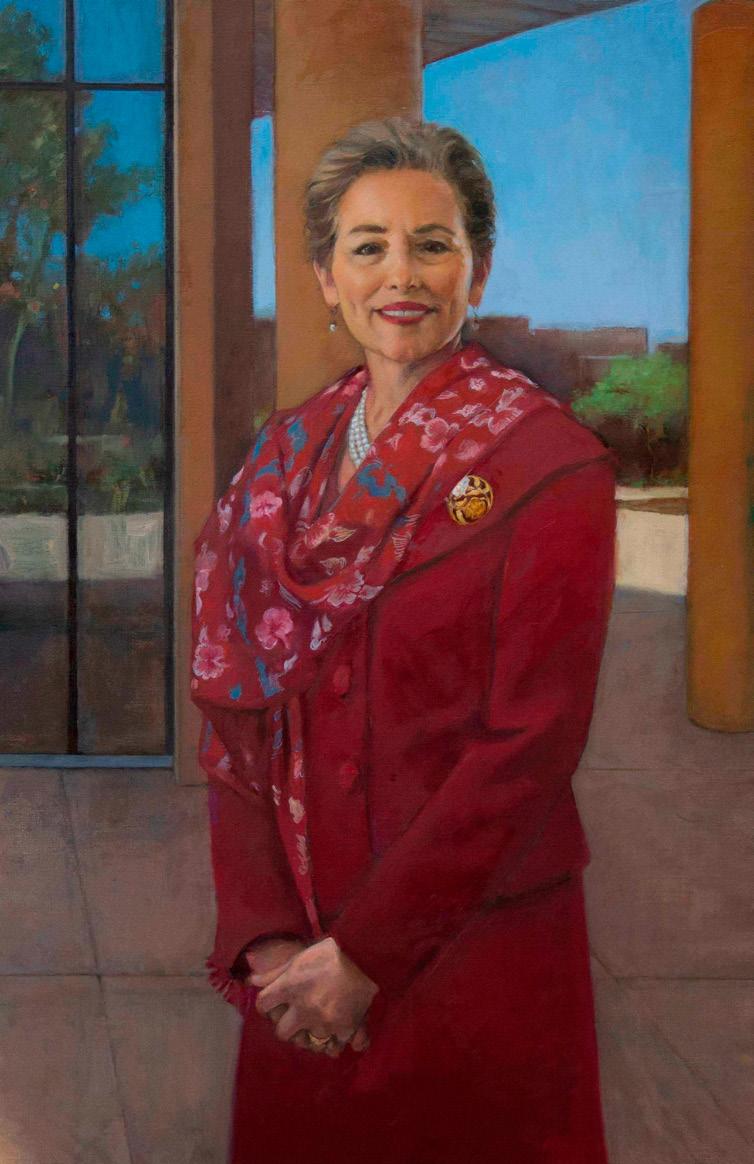
Four decades on, her multidisciplinary, culturally sensitive studies have had widespread, measurable impact on the vulnerable populations she works with, and indeed on government policy. “‘Coping and adjustment’ – that was the subject of my PhD dissertation,” she says. “My focus has always been on health promotion and prevention. Even if you’re already HIV infected, how can you make the best choices? And how do we deliver healthcare to people who won’t necessarily be able to come to a clinic – that’s what we’re changing now.”
A native New Yorker, after gaining her PhD at Case Western Reserve University in Ohio, Nyamathi spent the bulk of her career at UCLA, working often with international partners. Her highly successful founding deanship of the Sue & Bill Gross School of Nursing was an unexpected new direction that capped a thoroughly valuable and effective career.
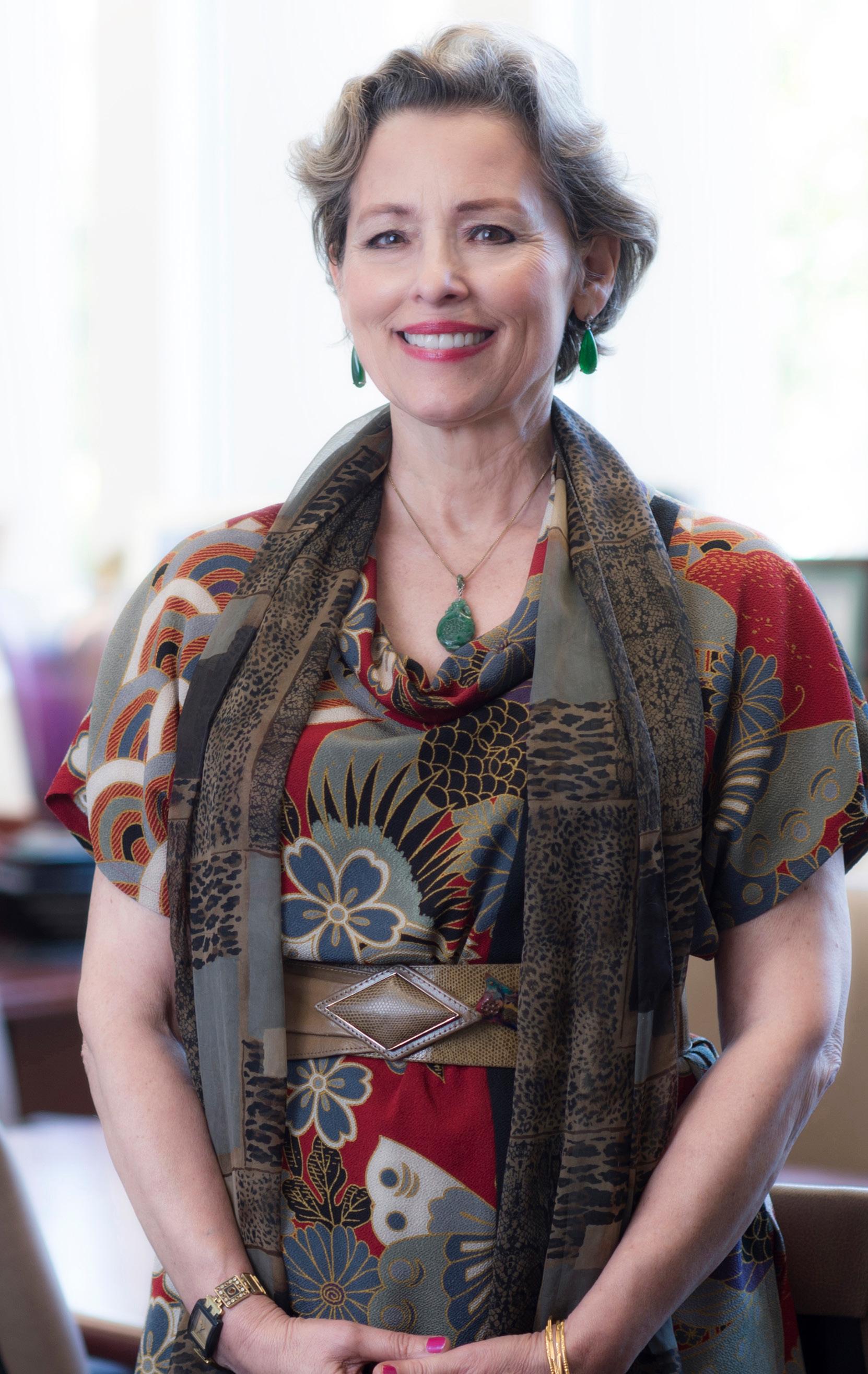
Happenings
Kyle Keith’s portrait of Adey Nyamathi as founding dean at the Sue & Bill Gross School of Nursing
32 : Humanitas
Painting by Kyle Keith / Lori Polson Portrait Specialists, Photo by Pat Harriman


“An Anteater for Life” Join the Nursing Alumni Community through connection, service, and leadership. Attend networking events Mentor a student Support a scholarship Join the Nursing Alumni Chapter Board Visit https://nursing.uci.edu/alumni-nursing-chapter/ Save The Date: Alumni Reunion, April, 2024 Follow us on Instagram to learn more:
Alumni Impact
Taryn Tanner
Year Graduated: 2011
Degree: MS
Taryn Tanner’s passion for her work as a forensic nurse examiner is palpable. She describes herself as being a “voice for the voiceless. These individuals are coming to you at the worst moment in their lives and it is my job to help them on a healing journey.”
For the past two years, Tanner has been practicing as a sexual assault nurse examiner (SANE) with Forensic Nurse Specialists, Inc, a professional corporation composed of registered nurses and nurse practitioners who are trained to conduct expert medical forensic exams for victims of sexual assault. In her practice, she sees individuals, mostly
community college and worked first in pediatrics at Miller Children’s Hospital and then in the emergency department at Long Beach Memorial Medical Center. In 2006, the idea of forensics came up again while she was working towards her bachelor’s degree. Forensic nursing was in its infancy, and there were not many roles available; but from then on, Tanner kept an eye on developments in the field. She went on to obtain an advanced practice degree at the UCI Program in Nursing Science, graduating in the inaugural class in 2011. There were fewer than 10 students in her class and, she says, “It was the best two years of any program that I have been in. I think about it often.”
Tanner. “To be a SANE, you have to have an empathetic attitude.”
women, who have suffered injuries from sexual assault and domestic violence and collects evidence that can be presented in court.
“Our main role as the forensic nurse is safety: emotional, physical, psychological safety,” she explains. “It is not an easy job. The amount of injury that patients can have can be very upsetting. They are sharing with you something very intimate and traumatizing. And you have to talk to them differently – remember, they are a survivor of a violent act. ‘How you came to be in my exam room is not okay. Tell me your story. Tell me what happened.’”
For Tanner, the role was years in the making. When she was 16, a forensic pathologist came to speak at career day at her high school. “I was fascinated,” she says, “but so much was going on. I didn’t give it any more thought.”
She obtained her RN degree from
The following seven years saw Tanner undertake a variety of nursing roles in both New York and California, including expanding her professional development in administration – experience she describes as “invaluable.”
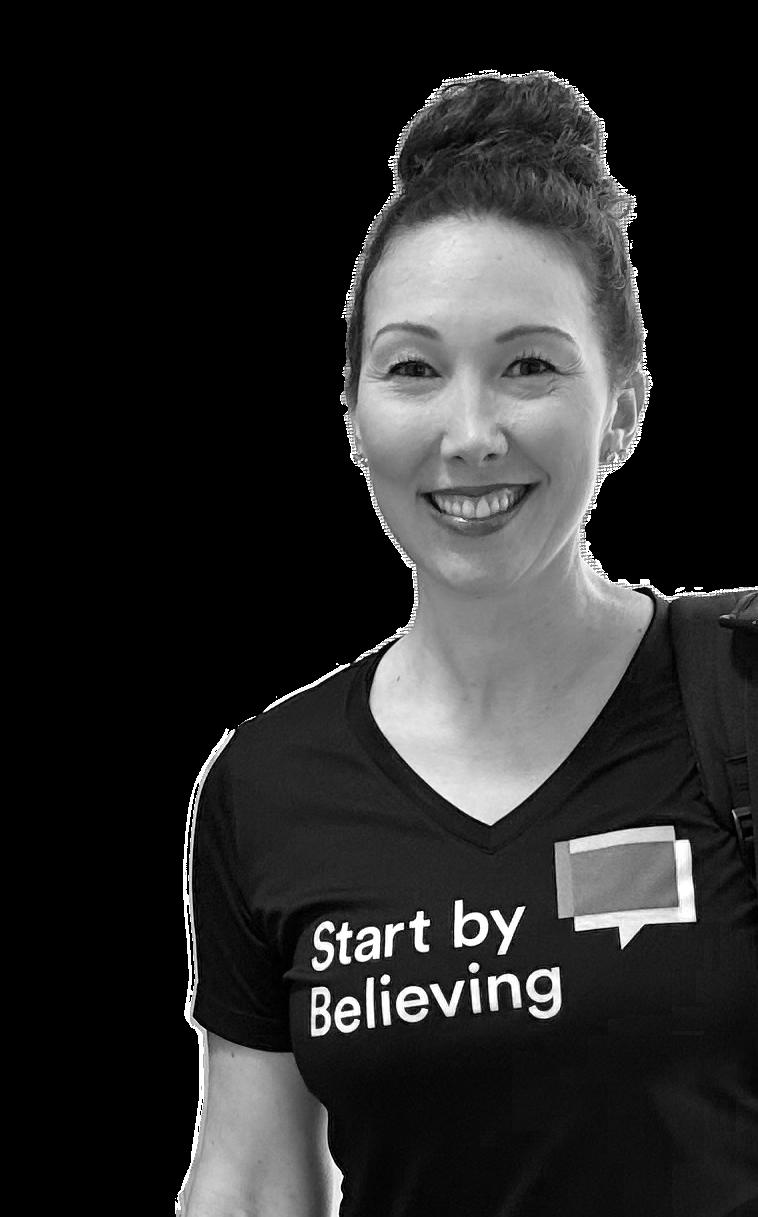
By 2018, she was actively researching education opportunities in forensic nursing and, a year later, the opening she was looking for came. The UCI Sue & Bill Gross School of Nursing had received a grant to train nurses for the role of sexual assault nurse examiner. Tanner was in.
Having completed the course, followed by the required 300 hours of clinical experience, Tanner is now part of the team who will be responding to a new sexual assault exam site on the UCI campus. This dedicated, spa-like suite provides a confidential space where students can have a medical forensic exam done by a forensic nurse, whether or not they want to make a law enforcement report. Amenities provided include a shower, clothing, and food.
“Start by believing the victim,” says
ing and photographing evidence, Tanner does law enforcement and victim advocate training. She has not had to testify in court yet, but the systems involved take a long time and there is a big backlog because of Covid. She explains:
SANE is a blend of different disciplines: Criminal justice, crime lab, medicine, and advocacy. You need to learn and know how to talk to each of these different systems.”
Since completing her sexual assault training, Tanner has obtained a post-master’s certificate in forensic nursing for death investigation through an online program at Monmouth University. Her new ambition is to become a nurse death examiner – that is, a nurse coroner – but only three states she is aware of currently recognize this role: Colorado, Louisiana, and Texas.
“I’d love to pioneer that pathway in California,” she says. “As a nurse death examiner, I could give a voice to those who are truly voiceless. I would be helping to get justice for the deceased and start the healing process for the survivors.”
“To be a SANE, you have to have an empathetic attitude.”
34 : Humanitas
Photo courtesy of Taryn Tanner
Taylor Semrad
Year Graduated: 2016
Degree: MS
Taylor Semrad has found her ideal job: taking care of the “sickest of the sick.” Semrad graduated in 2016 from the UCI Sue & Bill Gross School of Nursing advanced practice program, certified as a family nurse practitioner. She worked first in a small private family practice and then a large physician practice until, four years ago, she took up her role at Landmark Health.
Across the U.S., Landmark Health partners with health insurance plans to bring medical, behavioral health, and palliative care to patients, along with social services. Patient contact is through both in-person house calls and telemedicine visits over video and phone. In Southern California, the company is contracted with two large insurance providers to see their highest risk patients. These are individuals who have five or more chronic conditions and who oftentimes end up in the ER or the hospital. They’re likely to be homebound and have transportation issues, and are often without fulltime caregivers. Patients can be of any age, “but,” says Semrad, “they are very sick.” “We serve as liaisons with each patient’s community providers – both primary care and specialists,” she says, describing her role. “By seeing patients in their homes, we can identify healthcare gaps and psychosocial factors that are impacting their care. There’s a layer of support that they are often not getting in a 15-minute office visit.”
That additional layer of support has been central to Semrad’s realisation that the job is a perfect fit for her. Previously, she had felt frustrated by the necessity to rush through patient visits on a tight schedule, particularly when seeking to help the most vulnerable. Now she sees
five to seven patients per day and is able to spend 50-75 minutes per visit. “This allows us to really establish rapport,” she says.
After almost five years in the job, she has also gotten to know patients’ families and friends, becoming a member of the community surrounding her patients.
The continuity of care for Landmark’s “sickest of the sick” patients is available 24 hours a day, 7 days a week. As Semrad describes, if it is a holiday or non-office hours, and the patient has a health issue – say a urinary tract infection – they would call Landmark. A clinician is sent to the patient’s home that same day to assess and hopefully treat the issue, to keep the patient from going to the ER or urgent care.
The car of a Landmark provider functions as a mobile urgent care vehicle, equipped with items such as IV fluids, breathing treatments and a small supply of medications, includ ing injectables.
“We can treat minor urgent needs right in their home,” she says. “Of course, if it is a serious condition, we will refer them to the ER.”
This aspect of
the work fulfills the second of Semrad’s key motivations for her nursing career: being able to use the full extent of her education and expertise for the benefit of her patients. She is very active in the California Association for Nurse

Practitioners and a keen advocate for the profession.
As such, Semrad has also found a very satisfying interdisciplinary professional community among her colleagues at Landmark.
“Our team – which also includes nutritionists, behavioral health specialists and social workers – are all committed to the same goals and purposes. We are providing the highest level of holistic care that we can to the most vulnerable populations – all while addressing healthcare costs and filling the gaps that the primary care providers often do not have the time or resources for.”
“I love what I do,” she reiterates. “I love the mission and hope it becomes a healthcare model for all.”
Semrad was recently promoted to a supervisorial role, and plans to continue to develop her leadership skills while caring for the sickest
“Right now,” she reflects, “This is where I belong.”
“I hope this becomes the healthcare model for all.”
Summer / Fall 2023 : 35
Photo courtesy of Taylor Semrad
Alumni Connect
On April 15, alumni gathered back on campus to celebrate the first UCI Sue & Bill Gross School of Nursing Reunion.
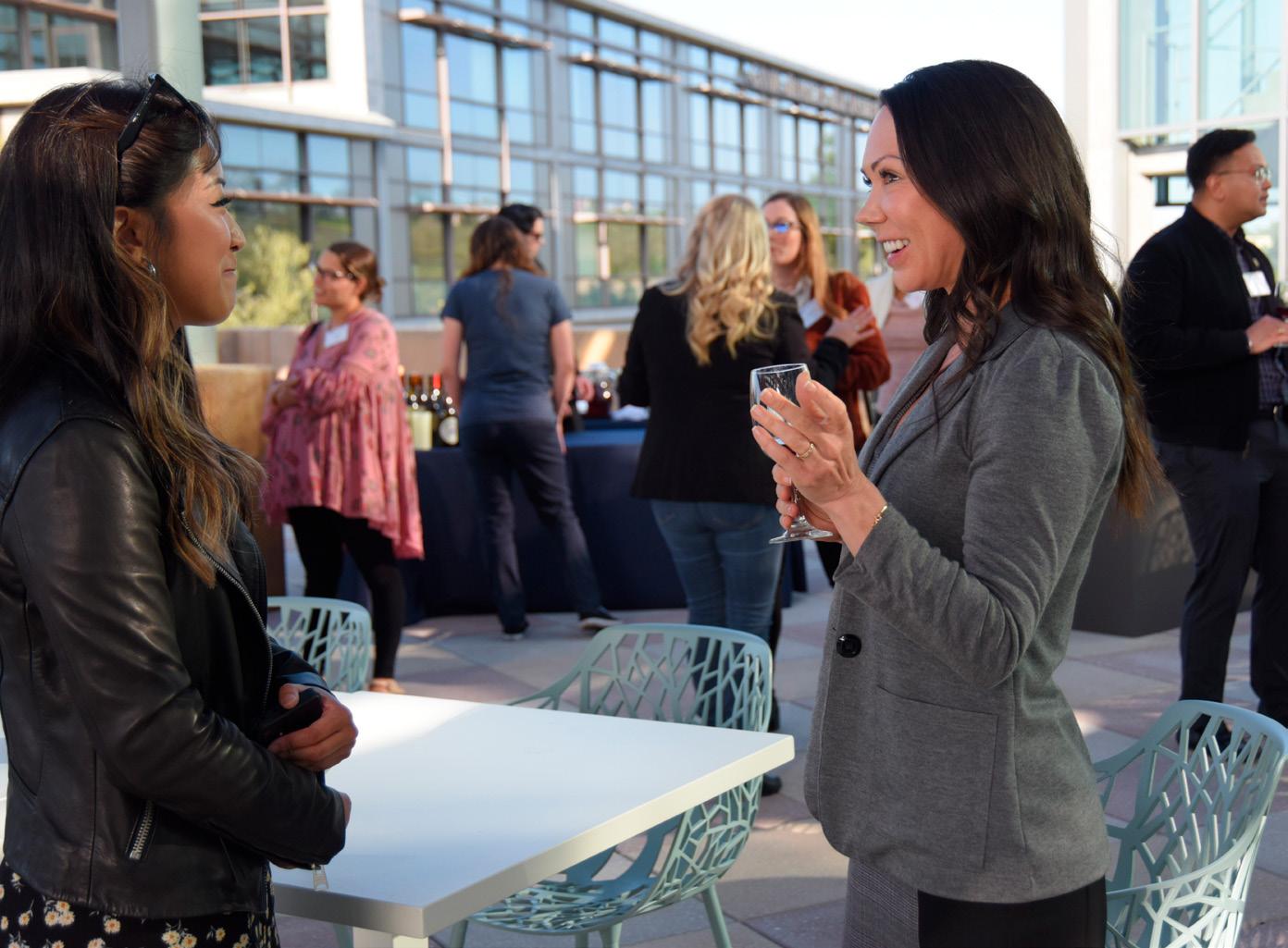

A celebratory dinner and tour of the new nursing simulation lab took place in the newly opened Sue & Bill Gross Nursing and Health Sciences Hall.

All photos both pages by Elin Slavick 36 : Humanitas
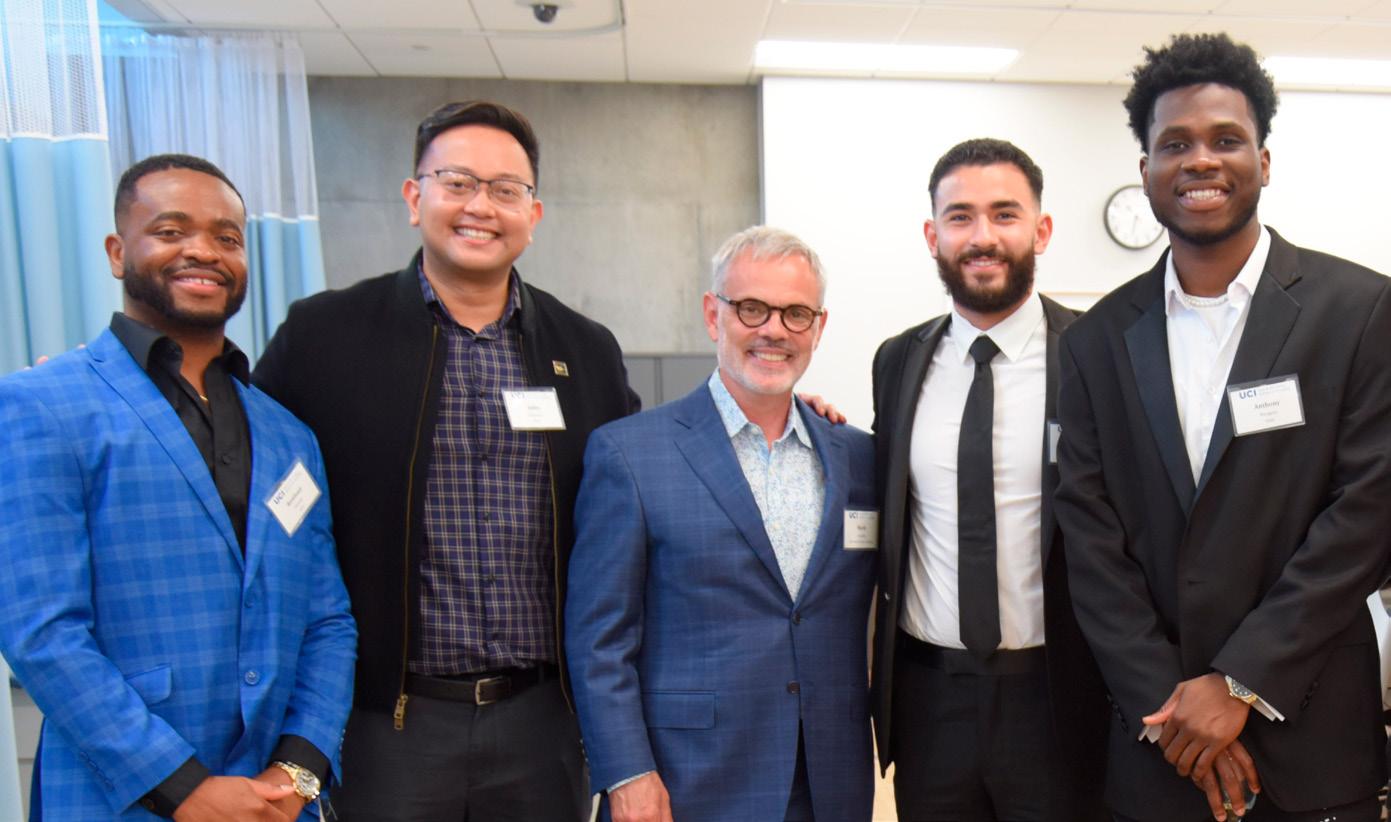
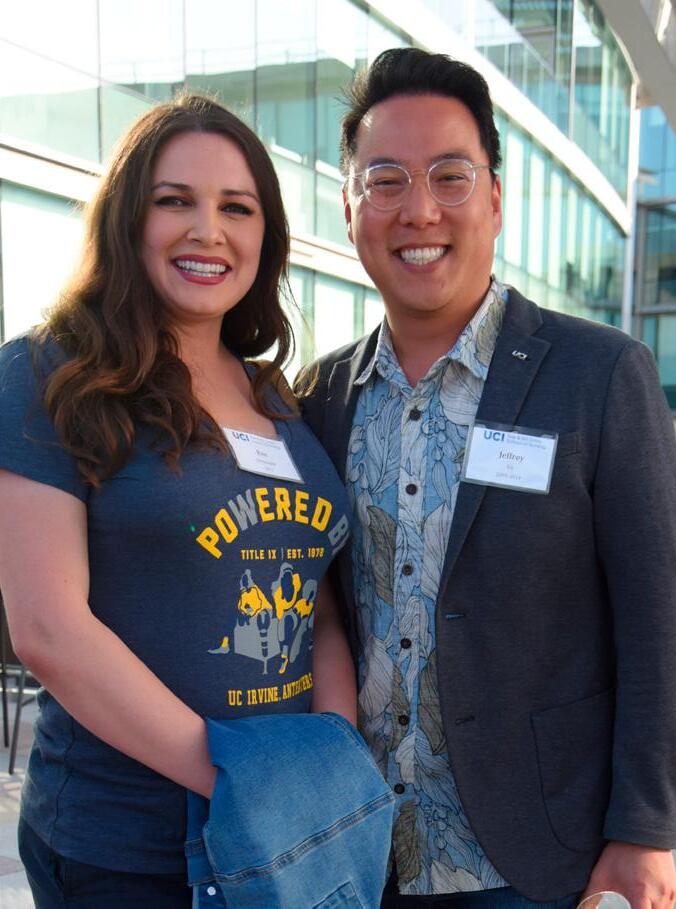
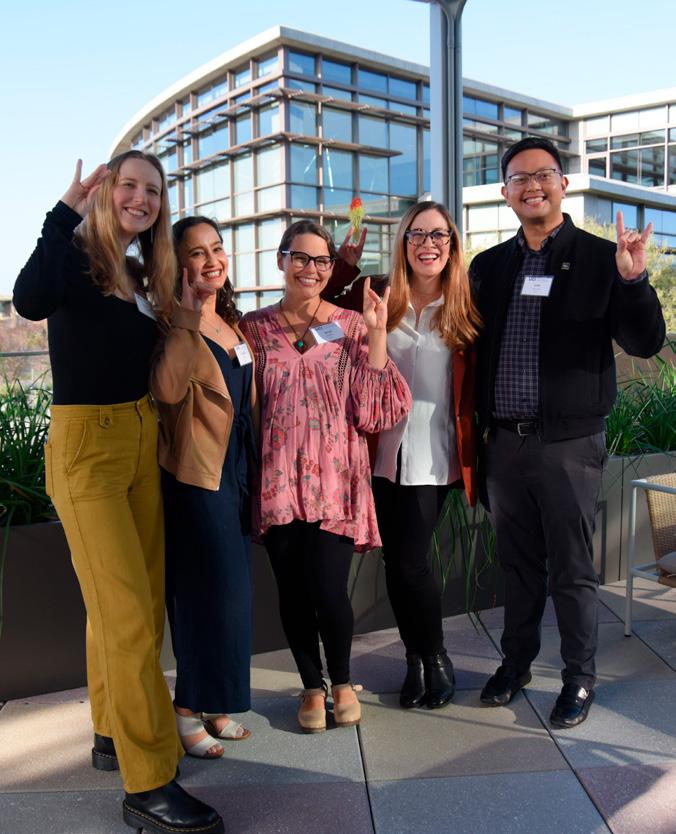
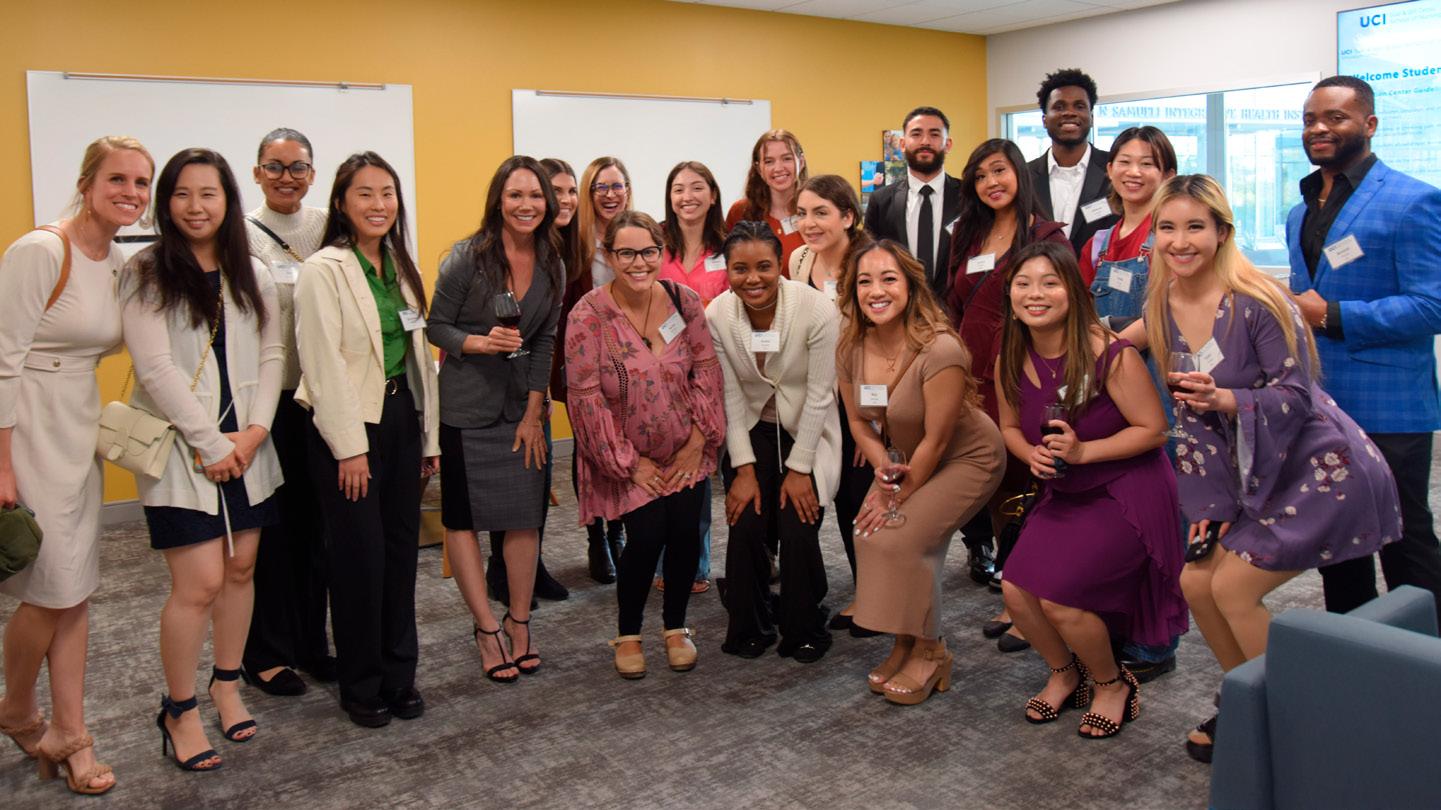
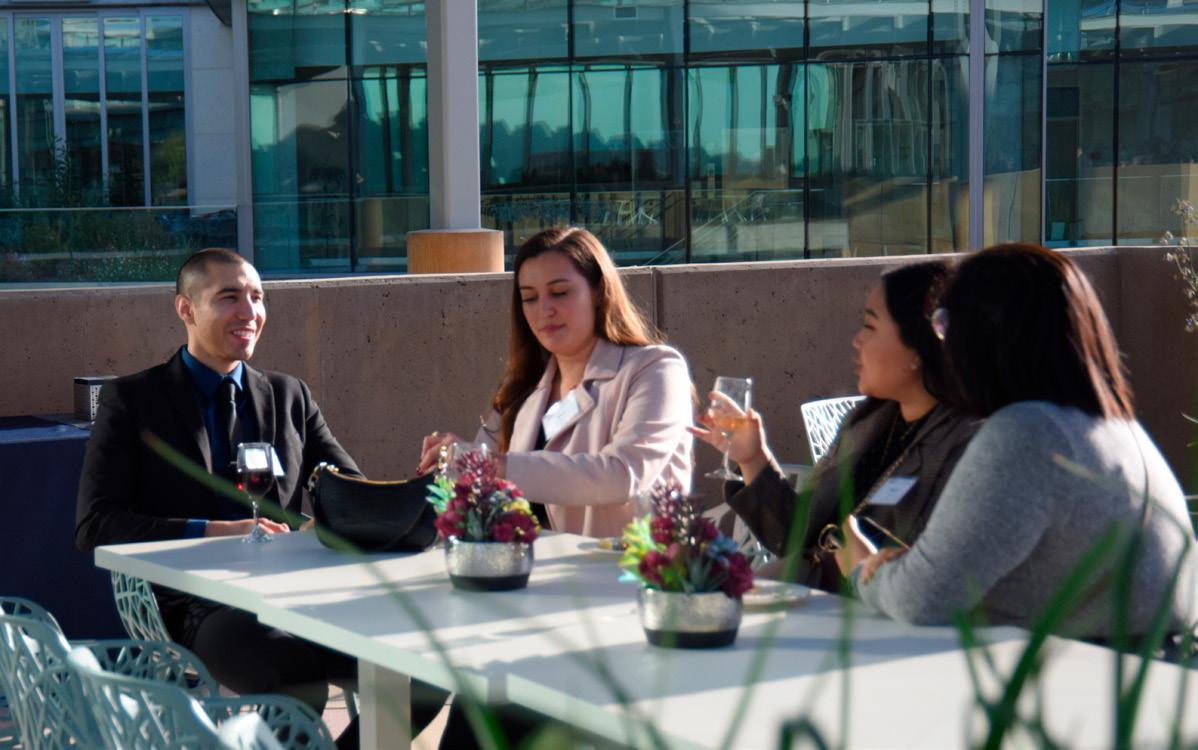
It was a night of reminiscence, reconnection, inspiration, and friendship.
University of California, Irvine
Sue & Bill Gross Nursing and Health Sciences Hall
854 Health Sciences Road
Irvine, CA 92697-3959 nursing.uci.edu

NON-PROFIT ORG. U.S. POSTAGE PAID SANTA ANA, CA PERMIT NO. 1106













 Top, Lexia Frank at Stocksy; bottom, Ann Johansson/Corbis via Getty Images
Top, Lexia Frank at Stocksy; bottom, Ann Johansson/Corbis via Getty Images
 By Nicholas Schou
By Nicholas Schou


 St Patrick Hospital, Missoula, MT circa 1993. Nurses were involved in launching and promoting the hospital’s first successful recycling program
Beth Schenk, executive director of environmental stewardship for Providence St. Joseph Health
St Patrick Hospital, Missoula, MT circa 1993. Nurses were involved in launching and promoting the hospital’s first successful recycling program
Beth Schenk, executive director of environmental stewardship for Providence St. Joseph Health


































































